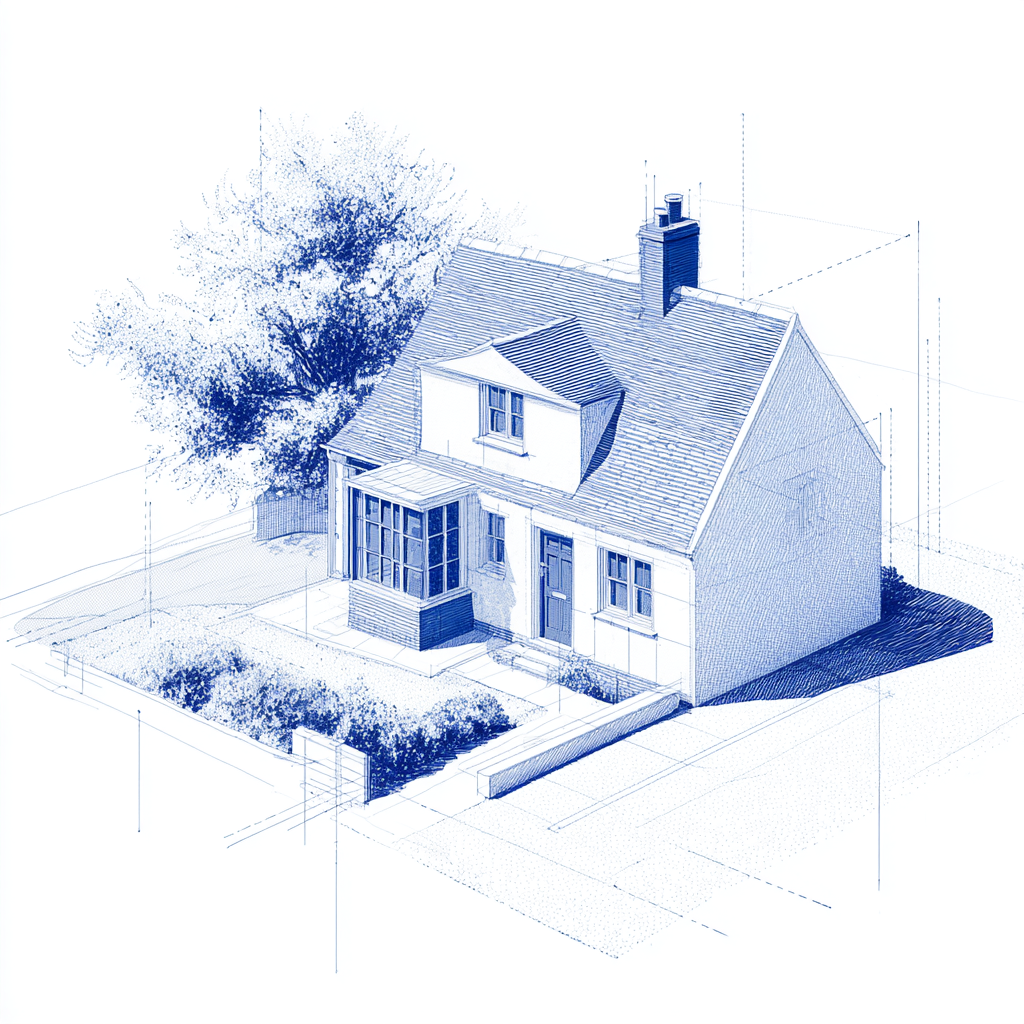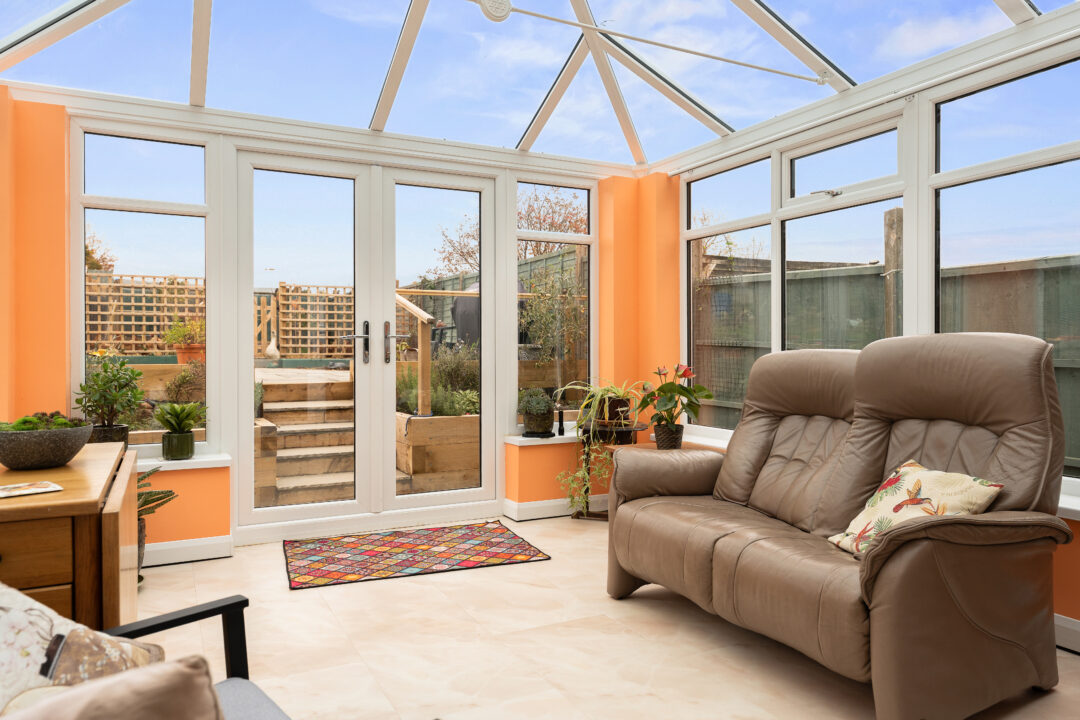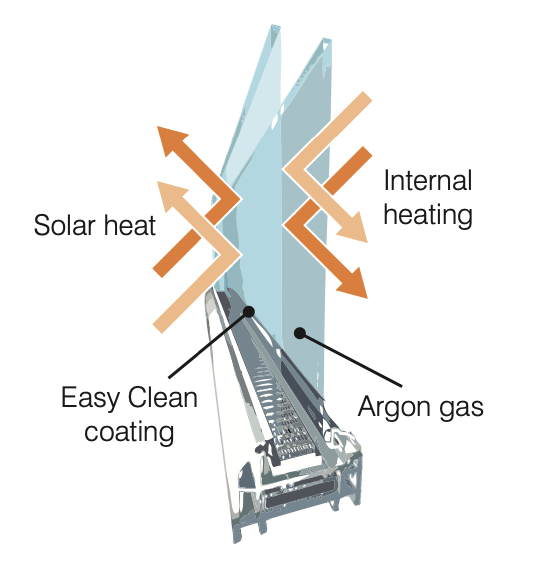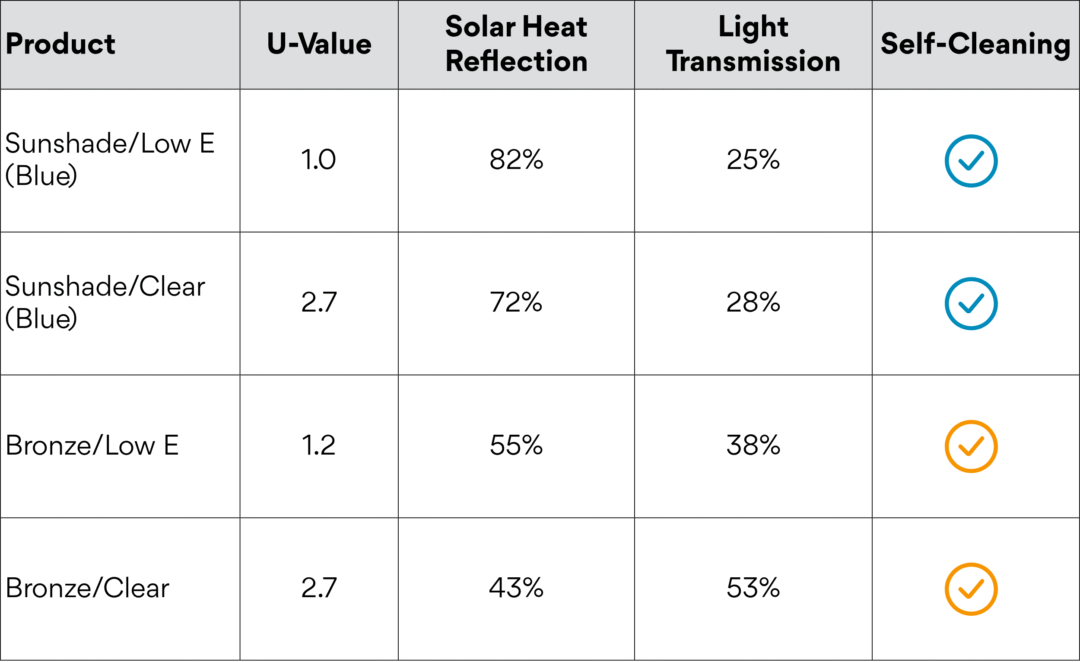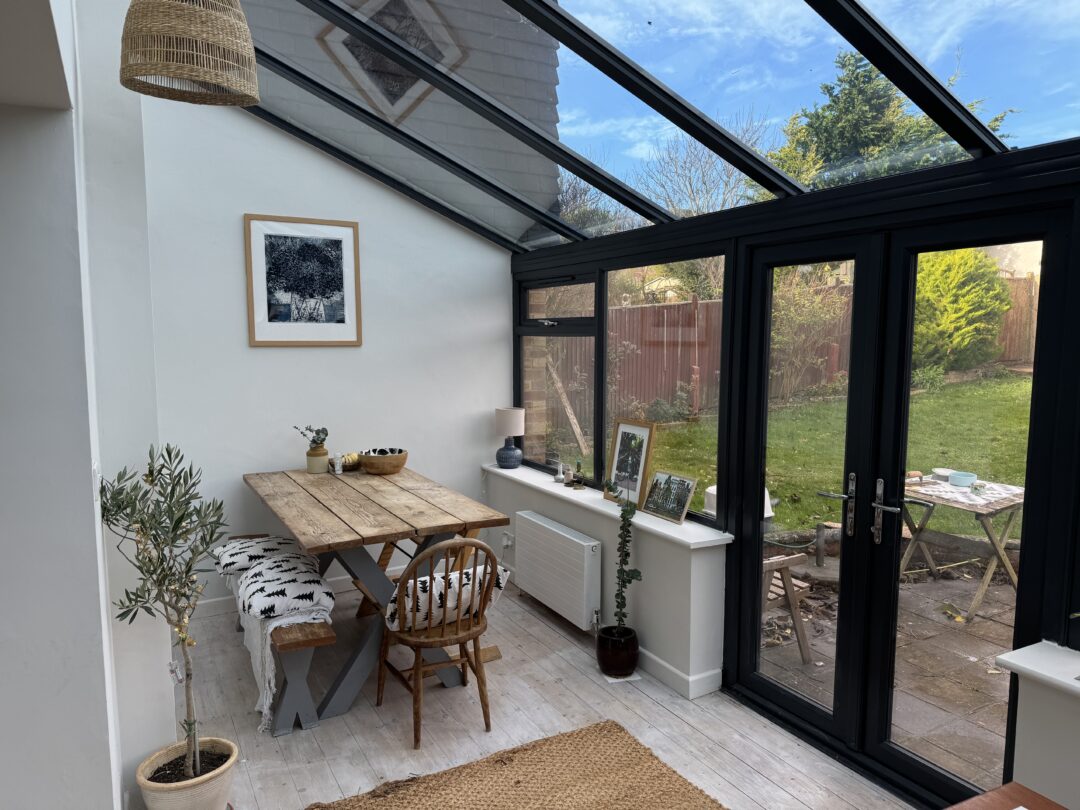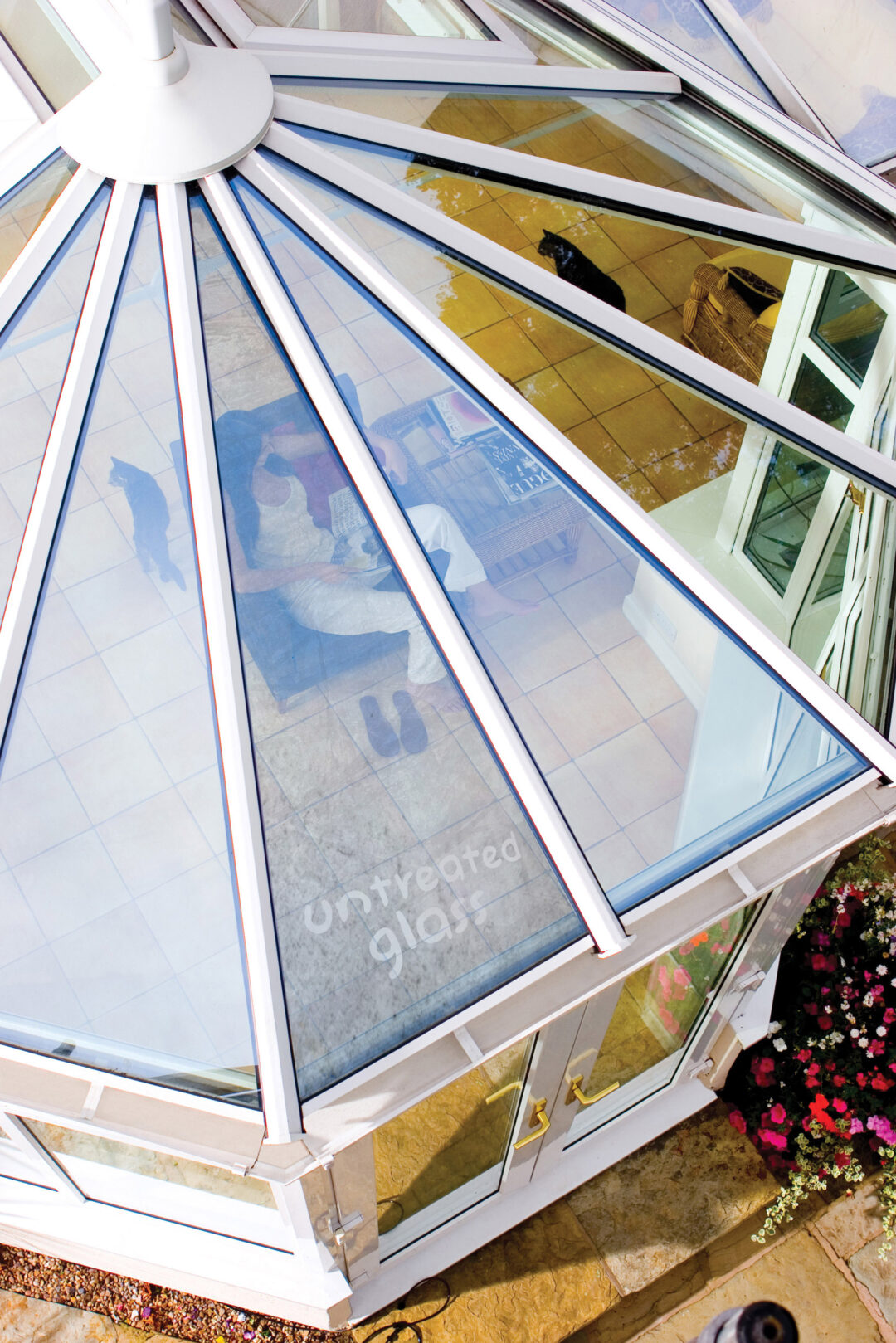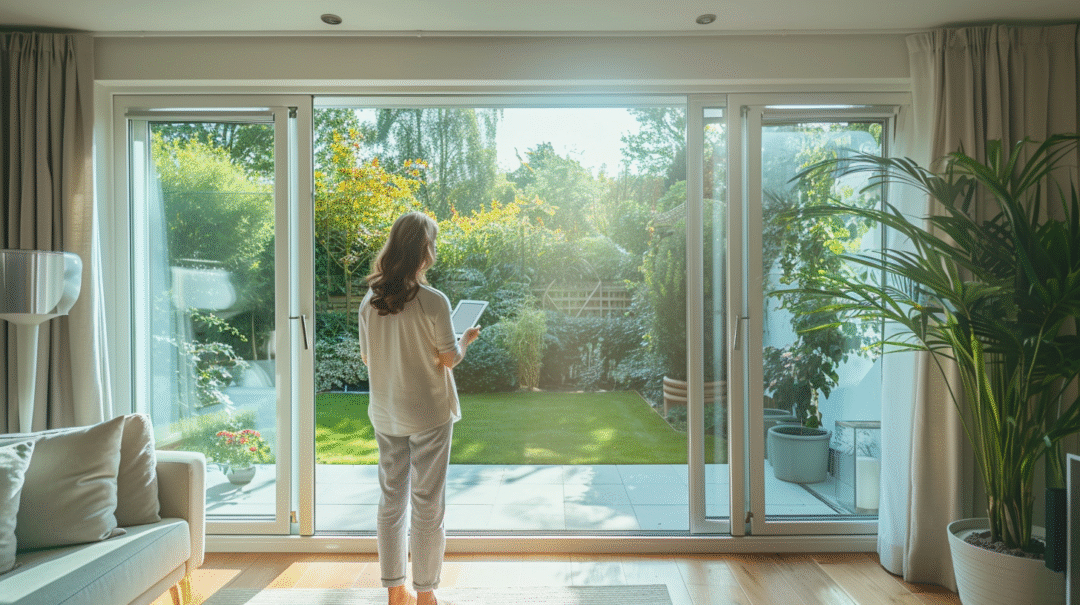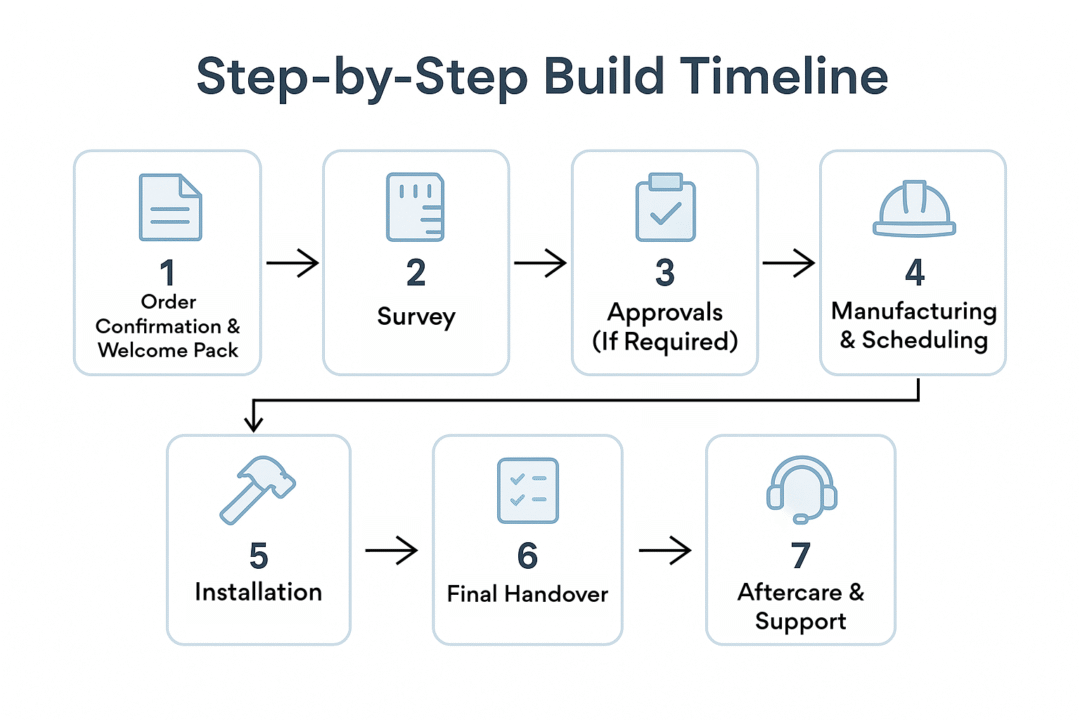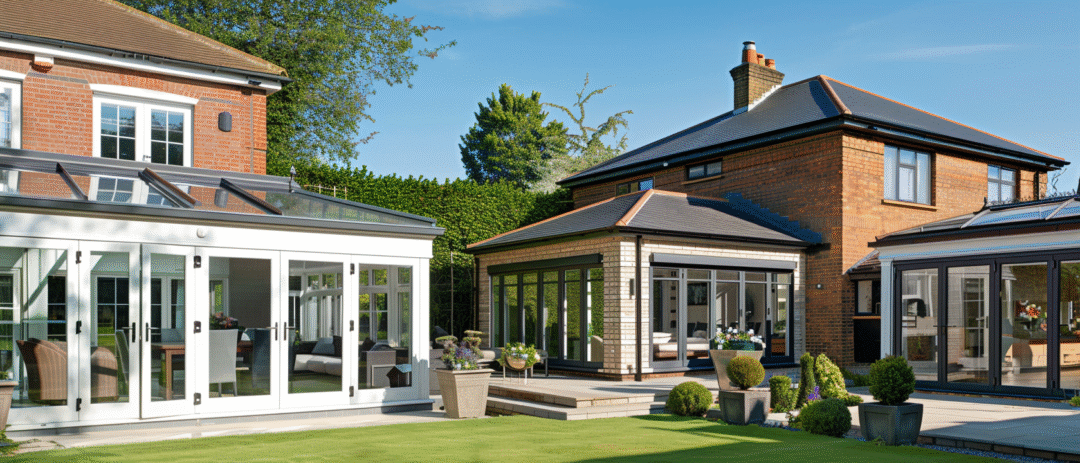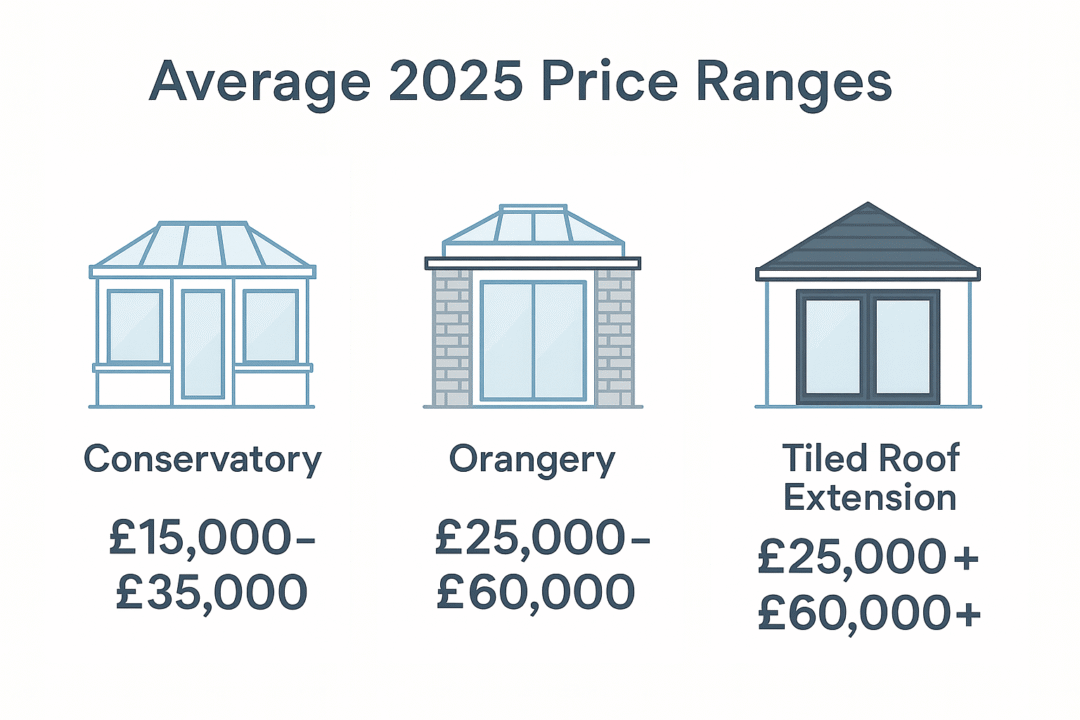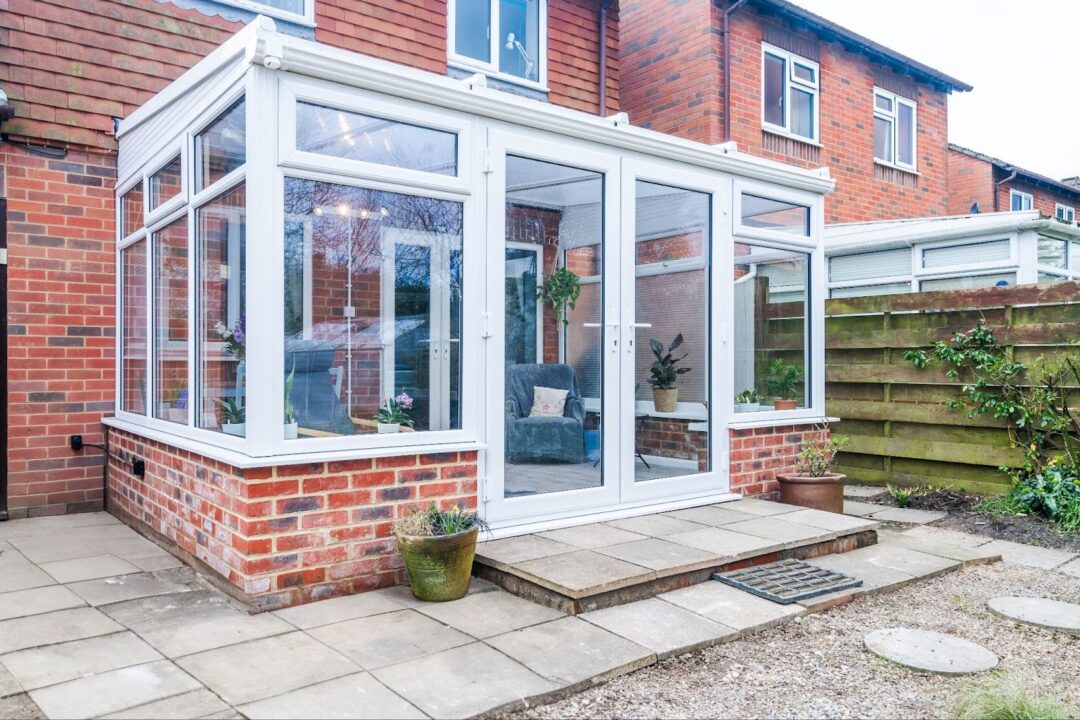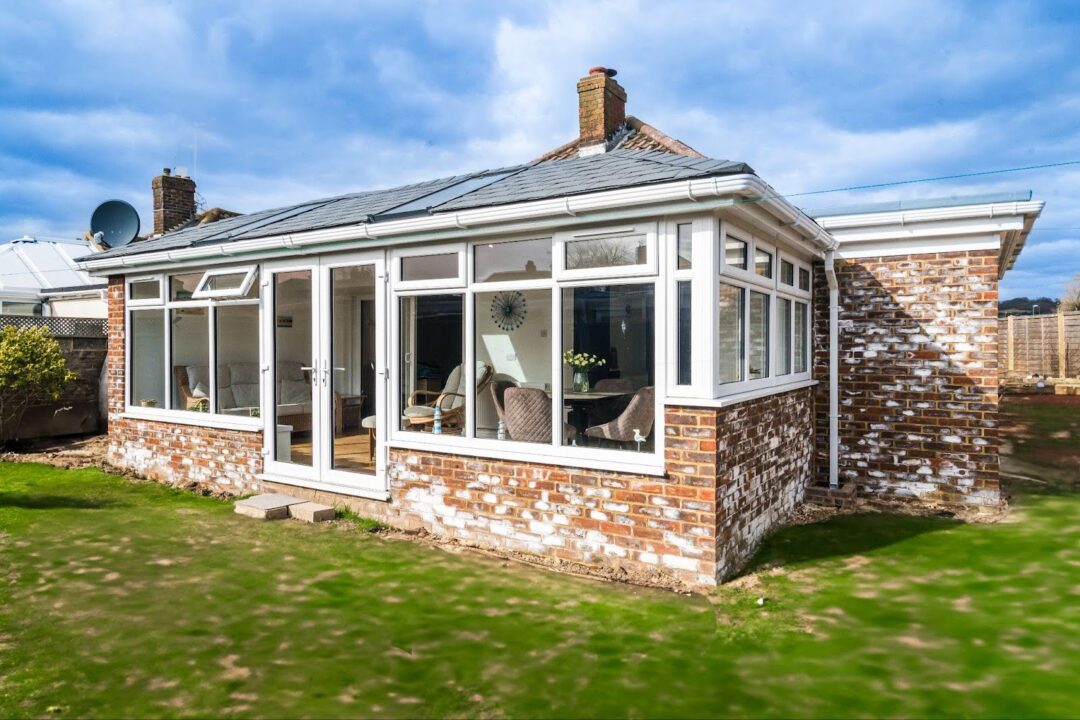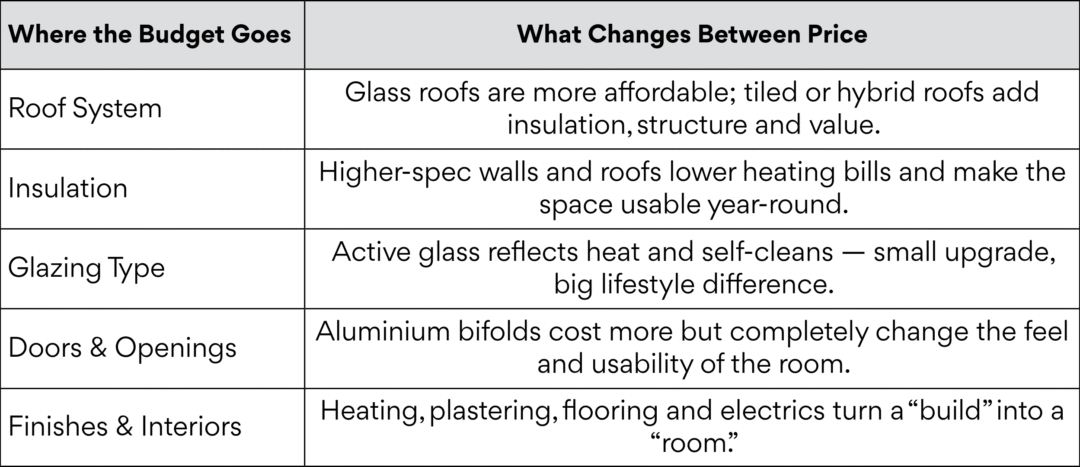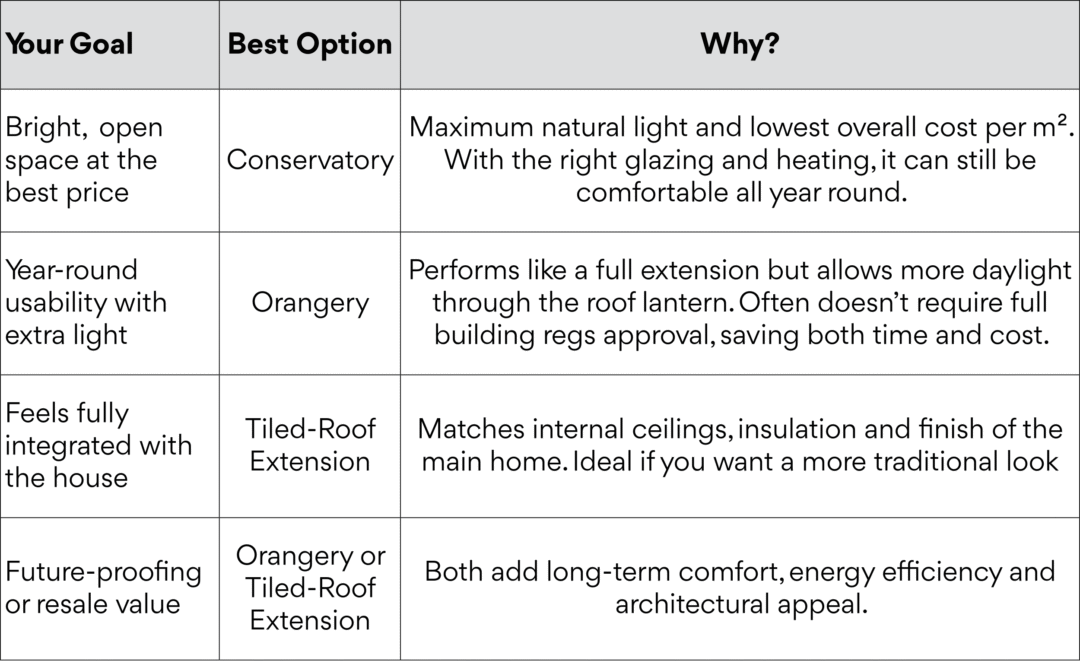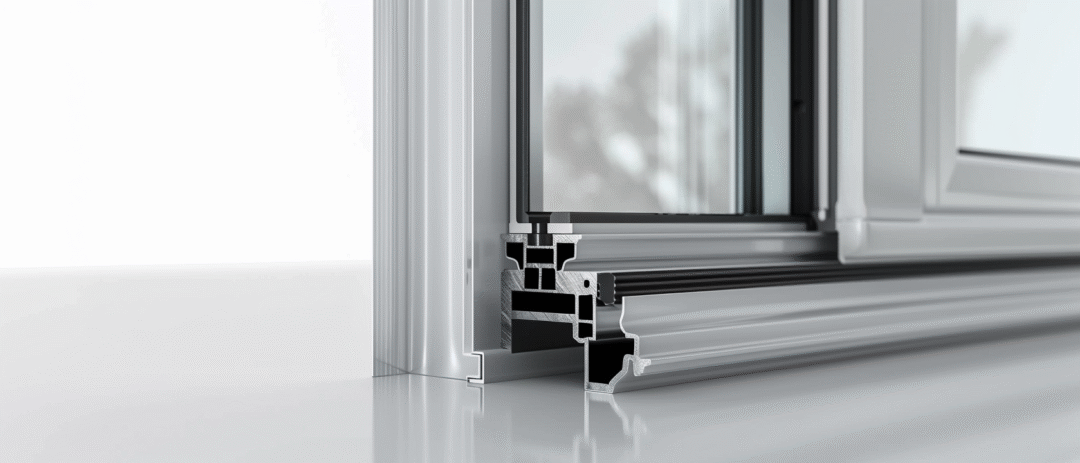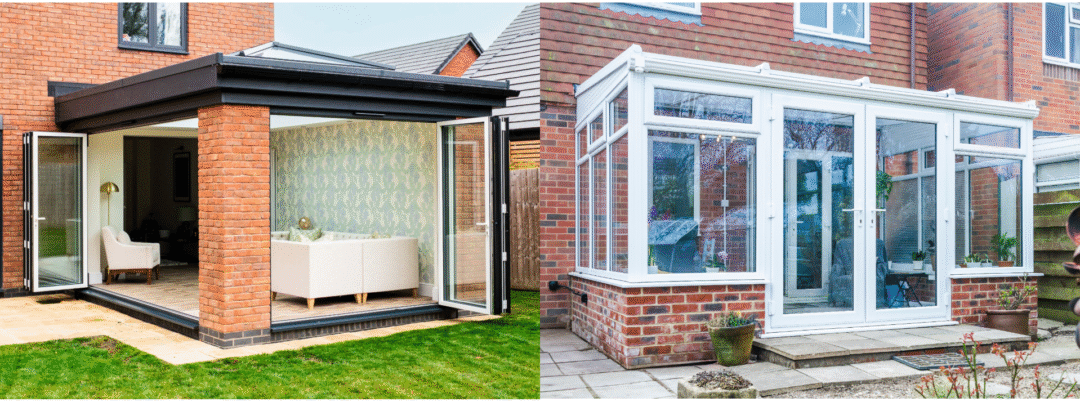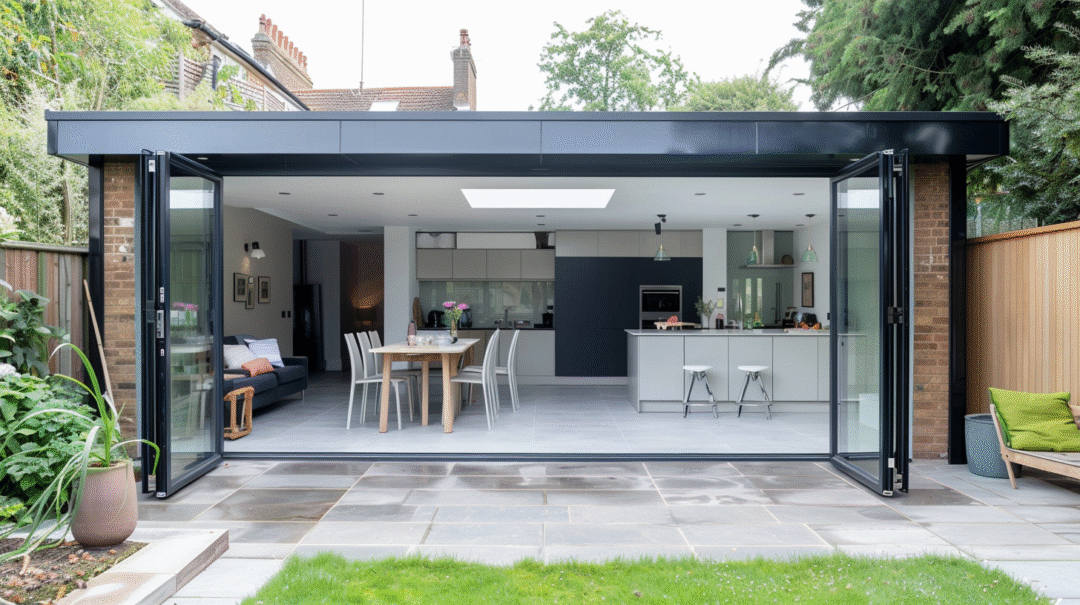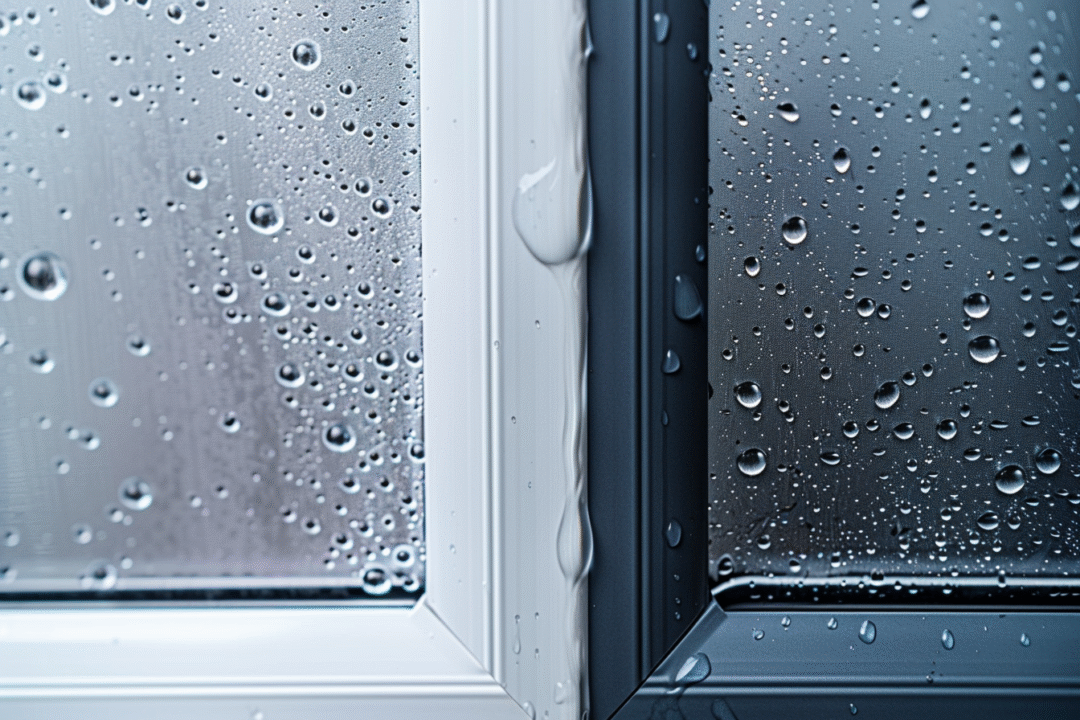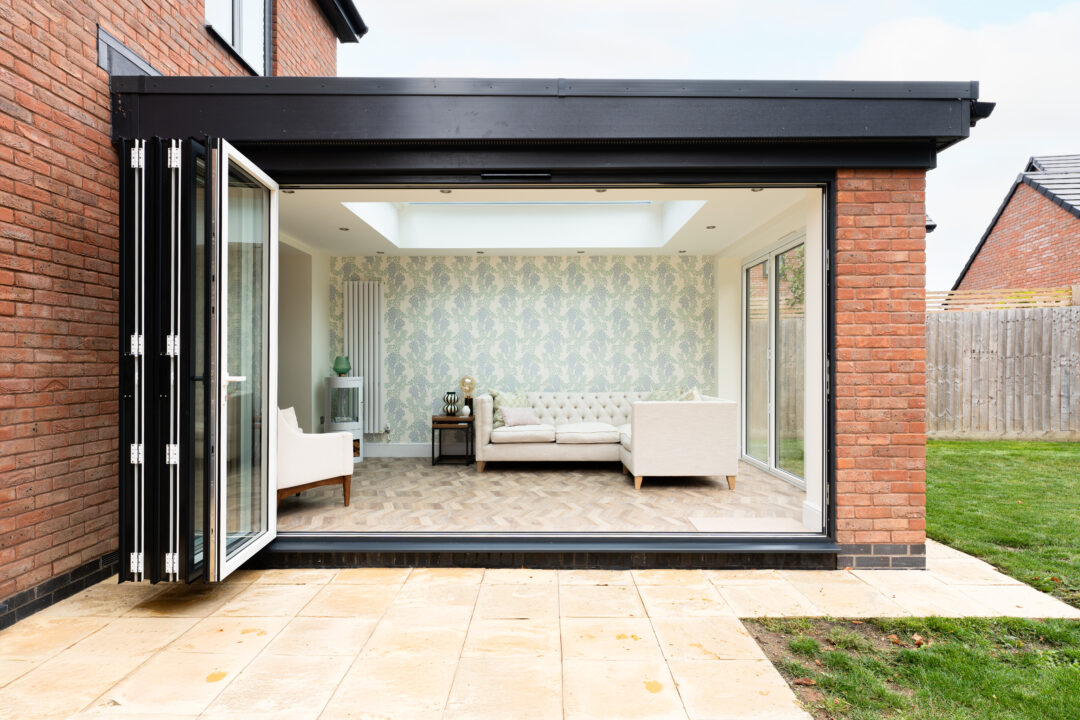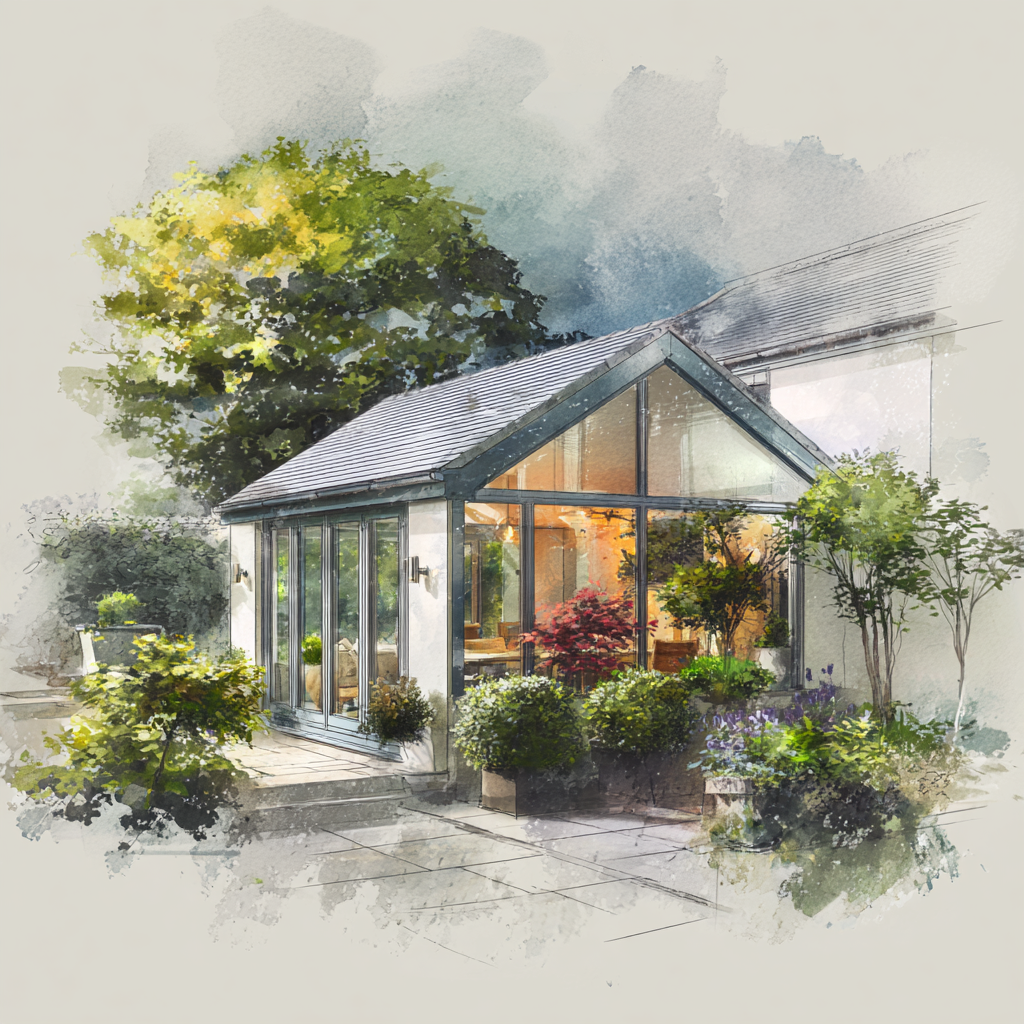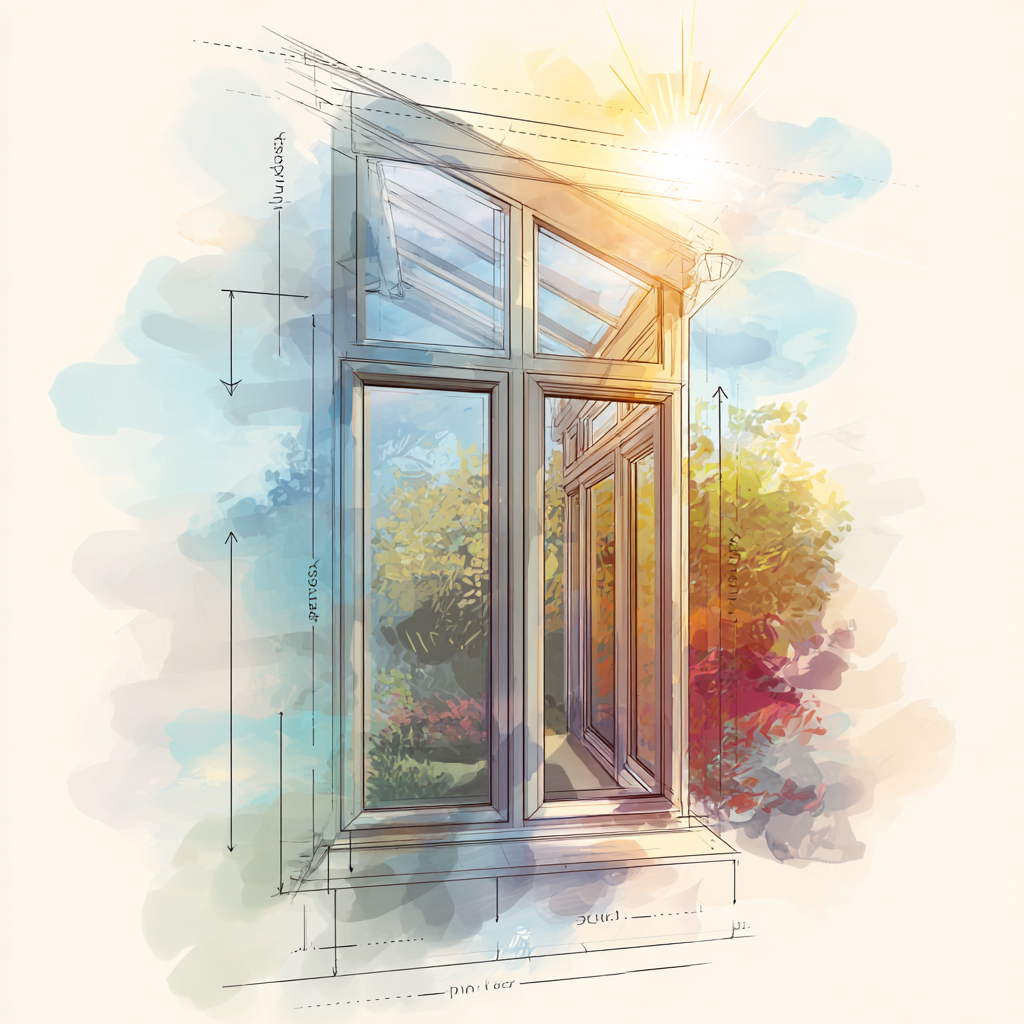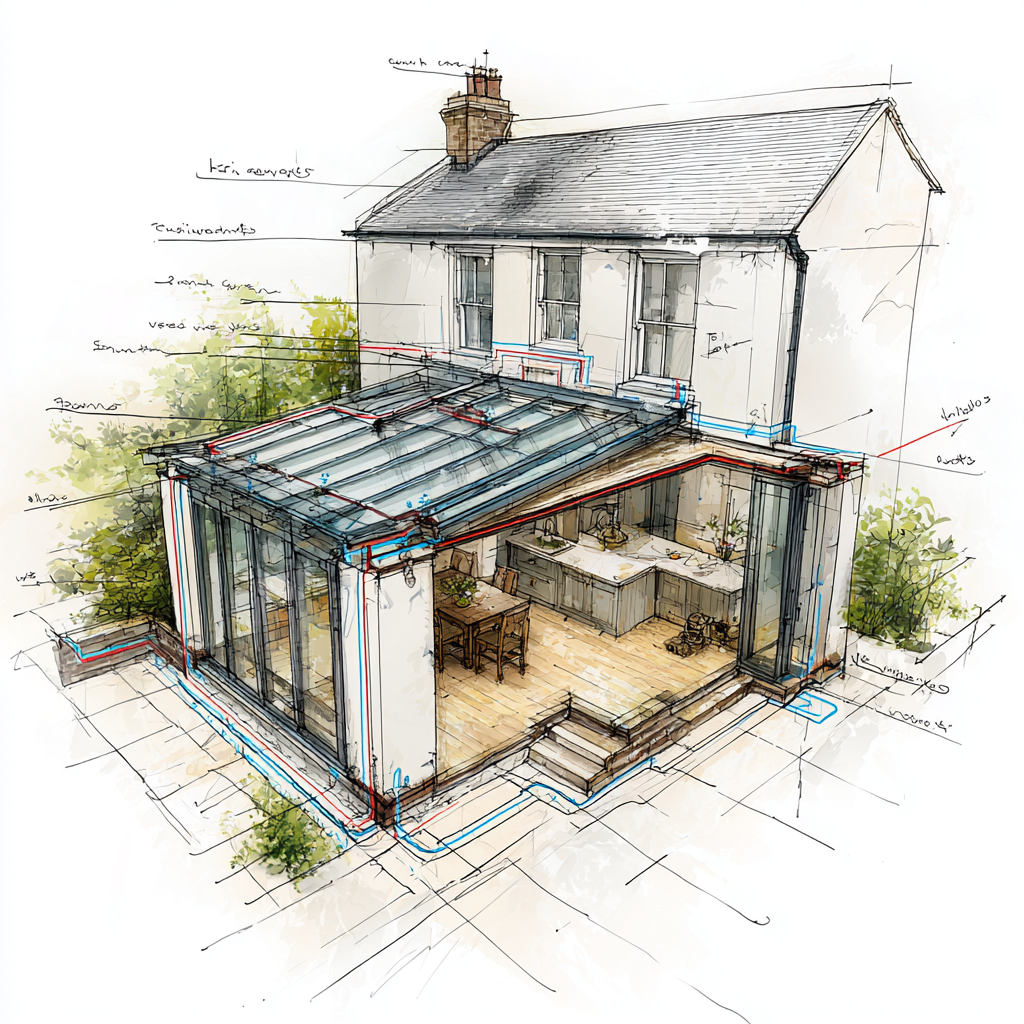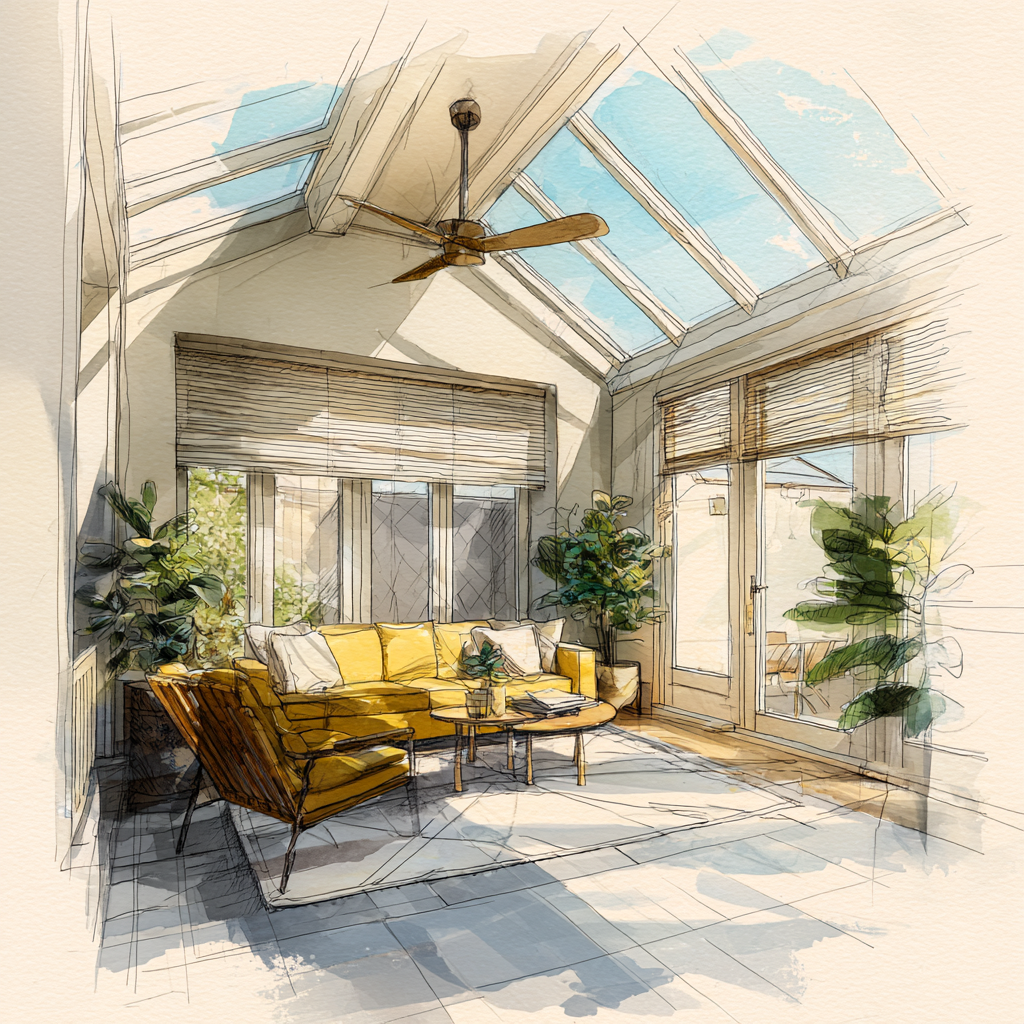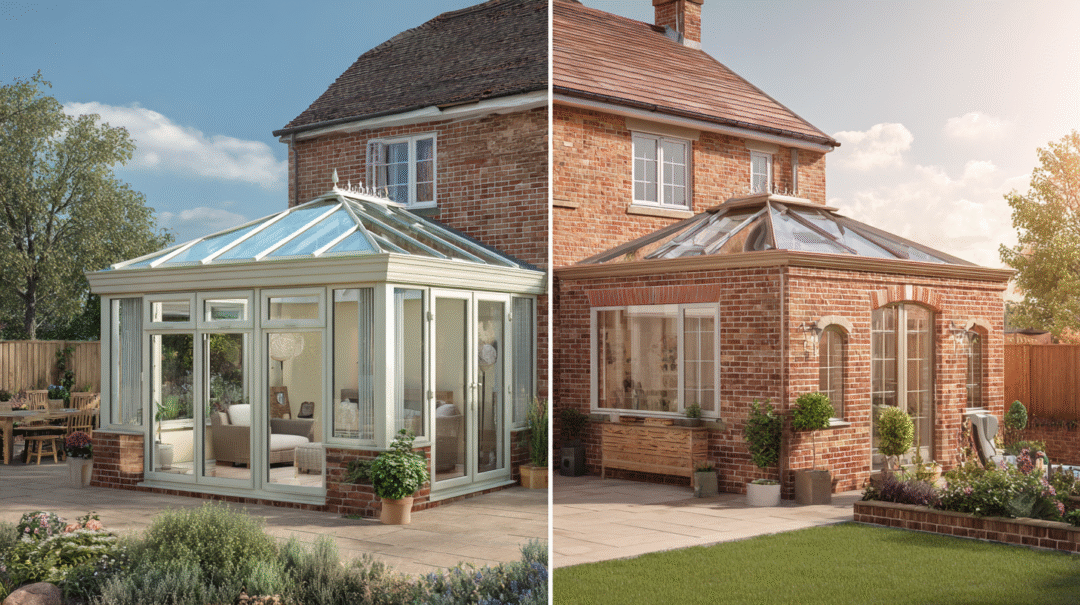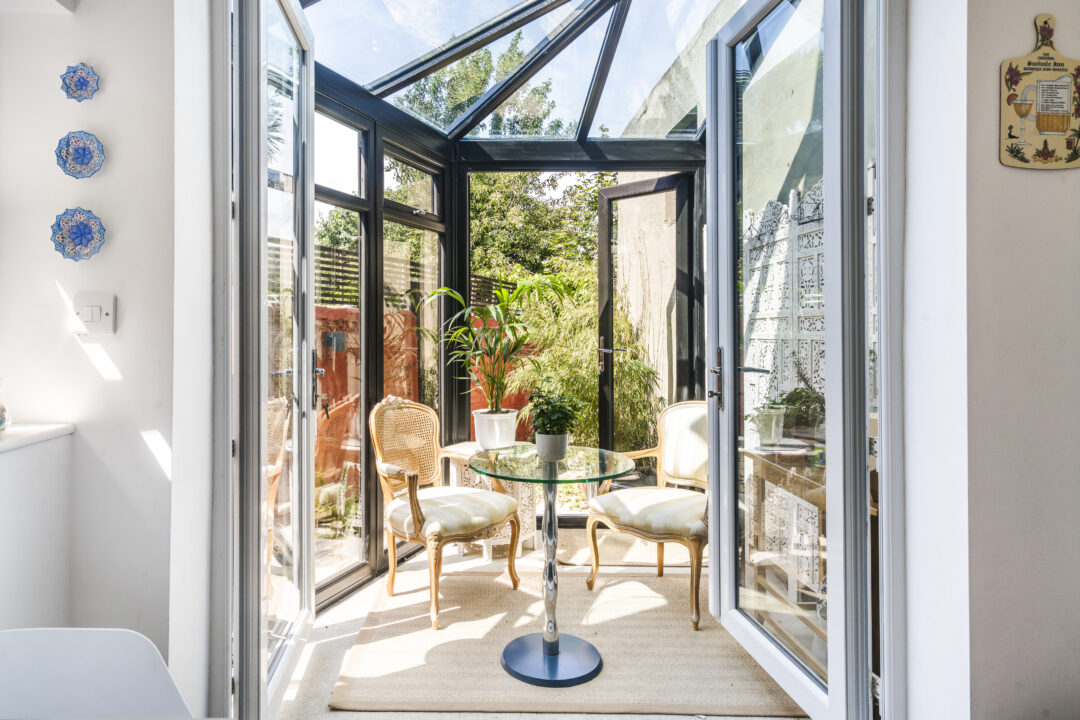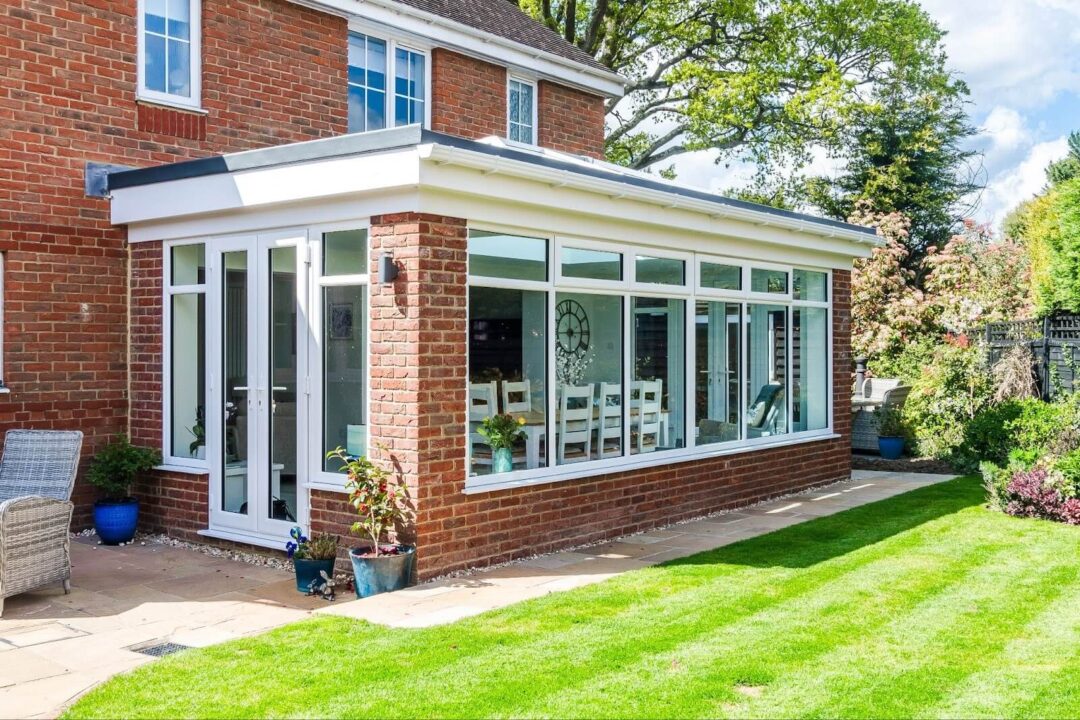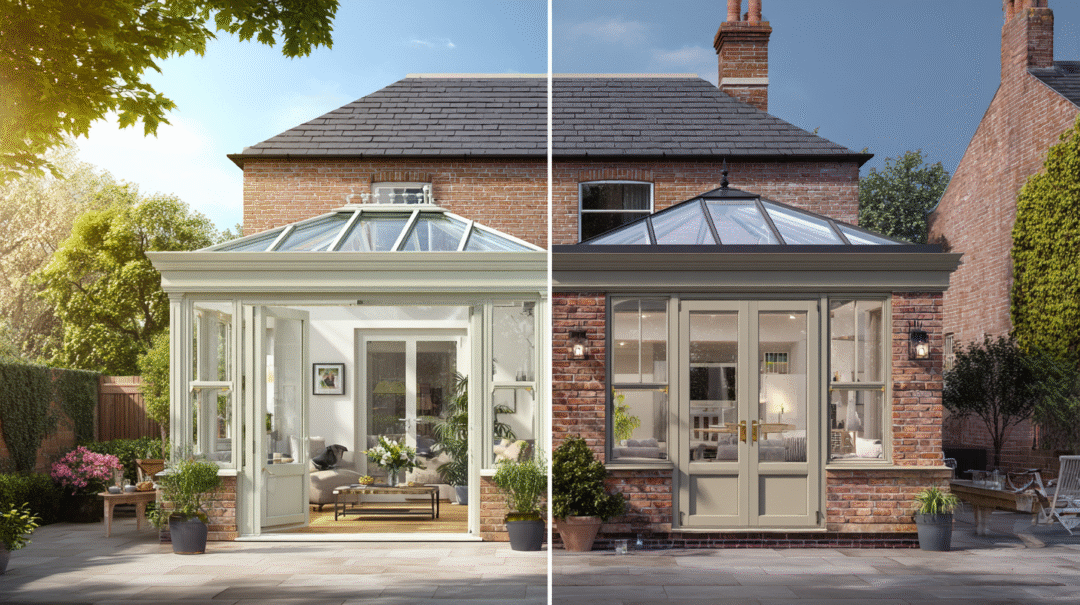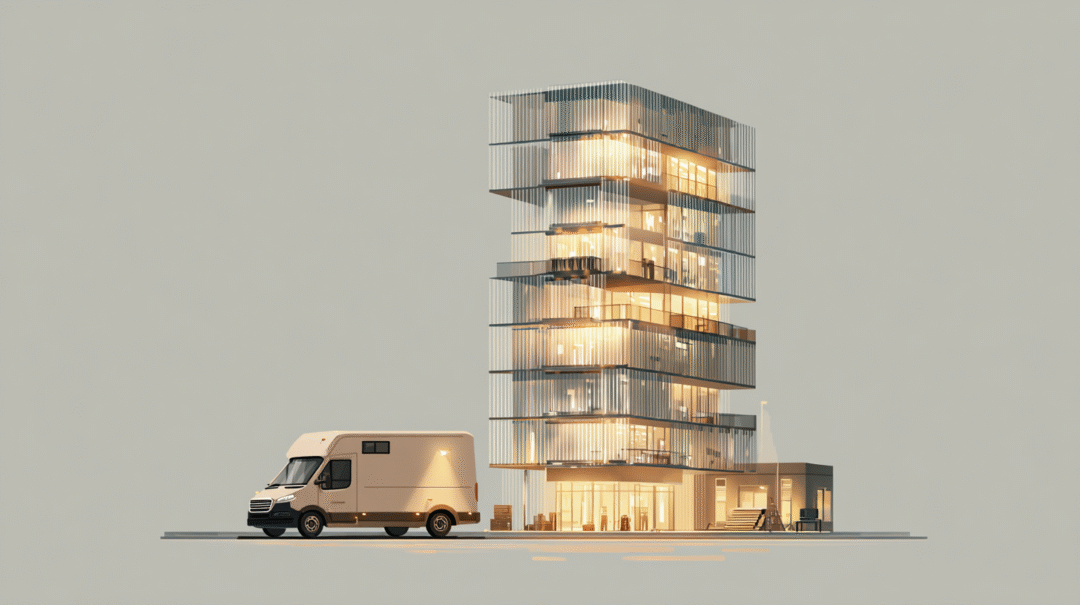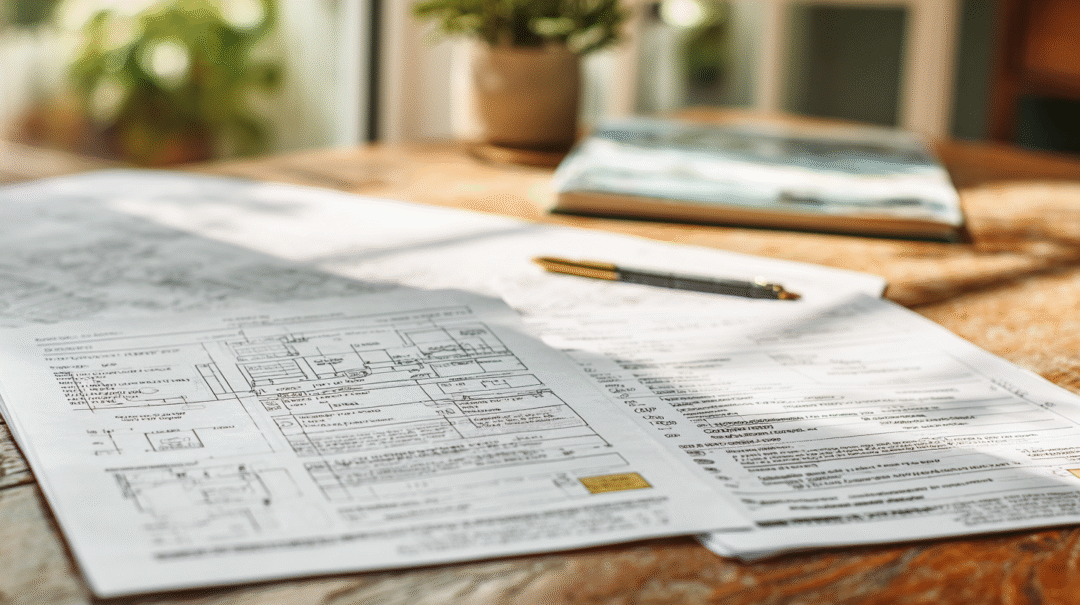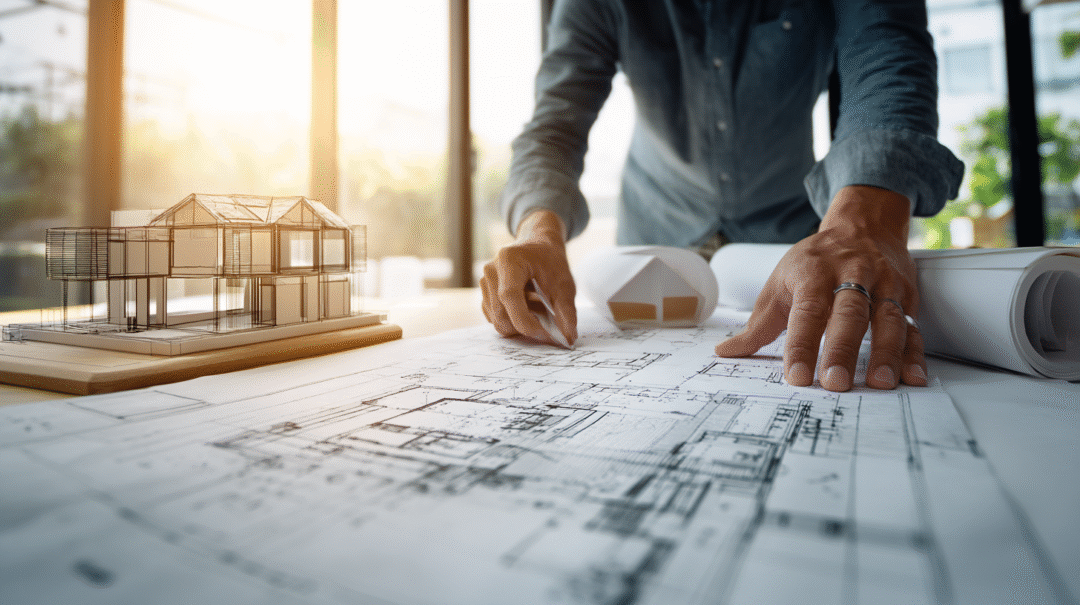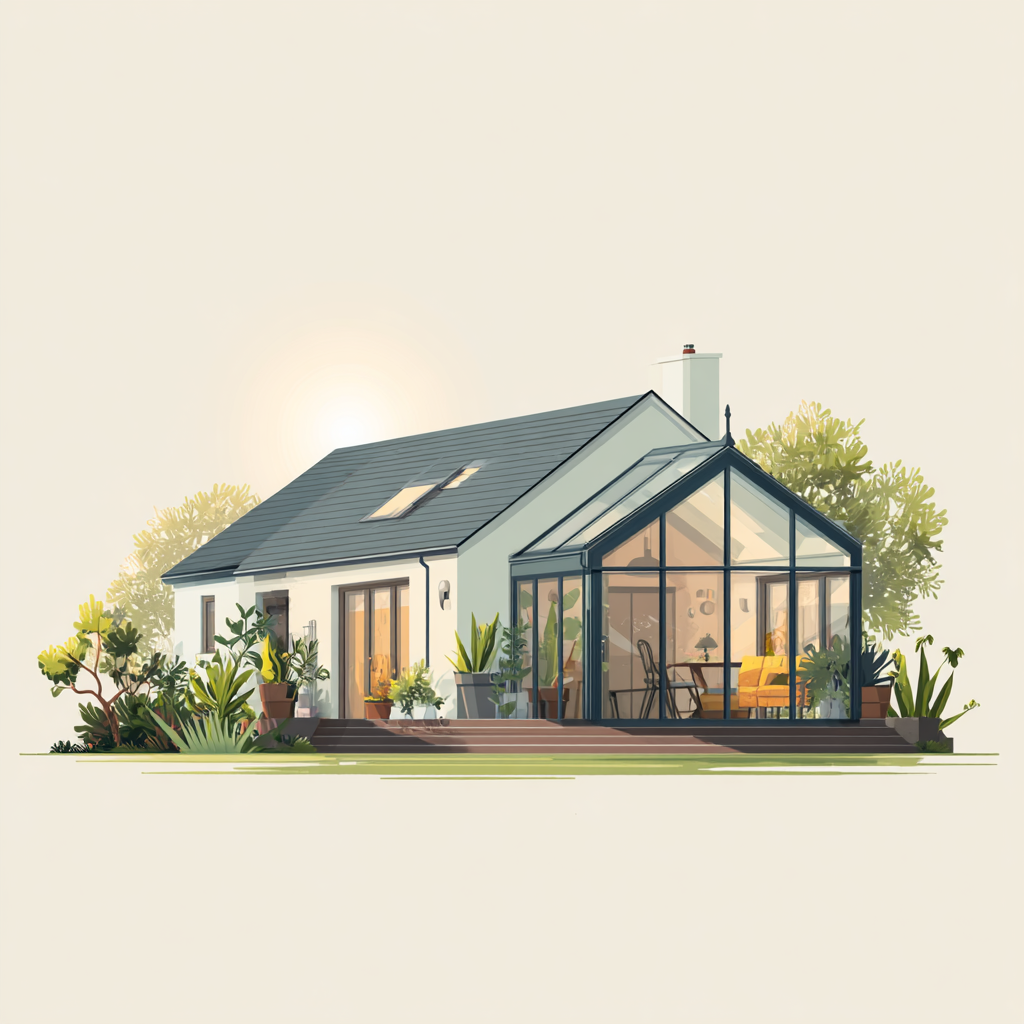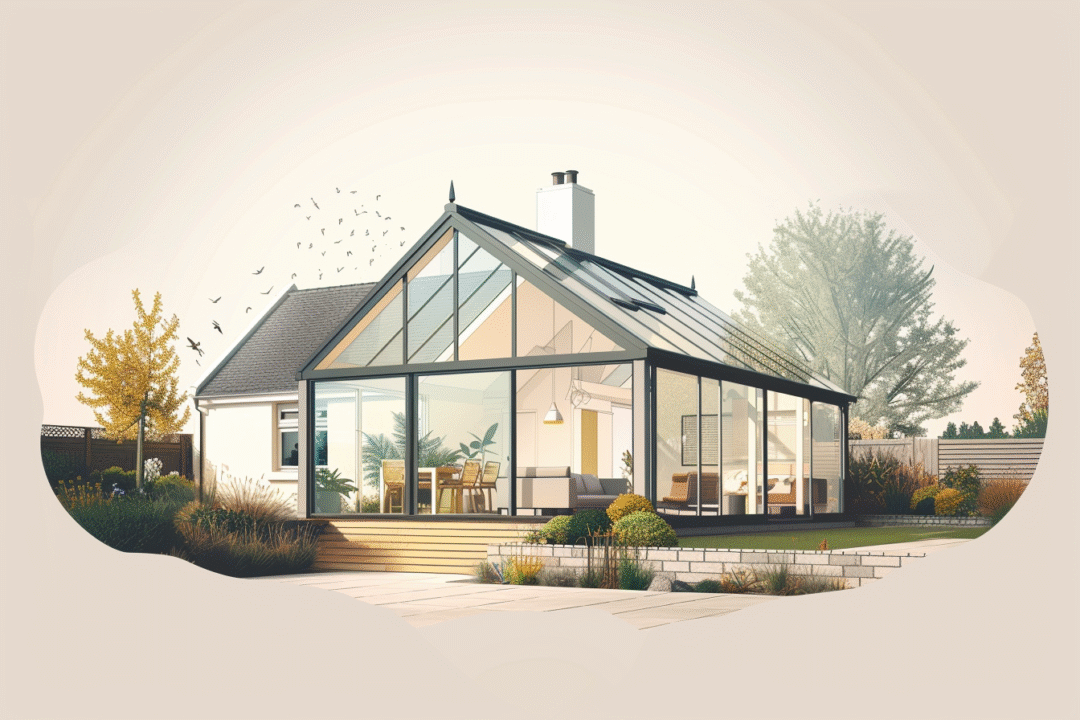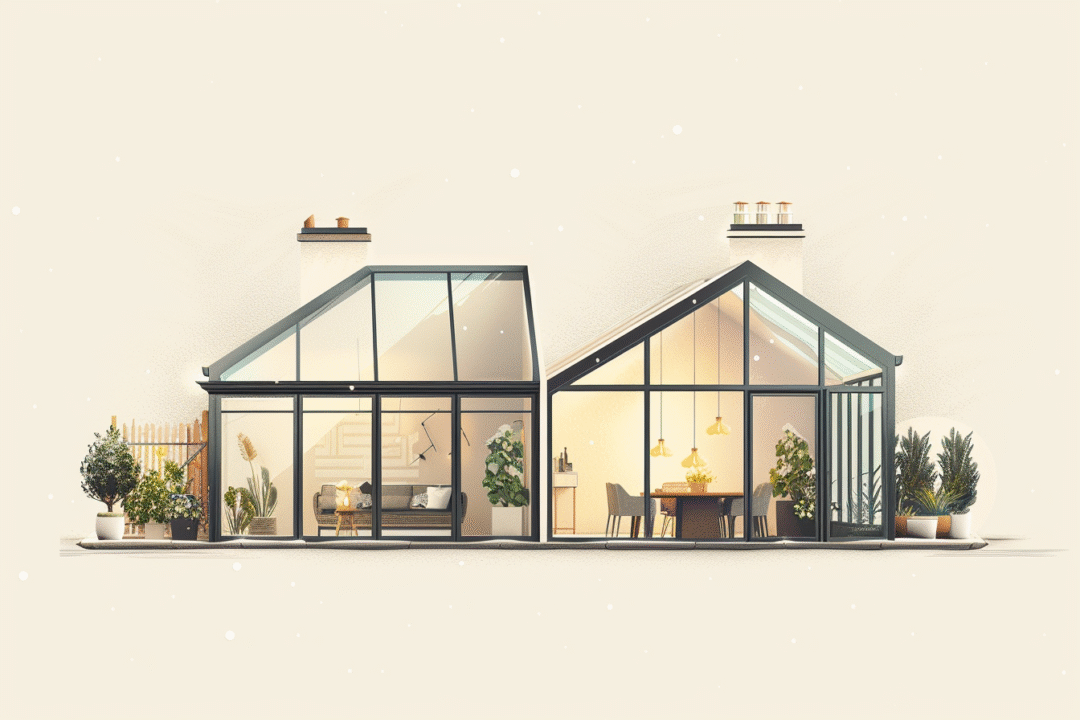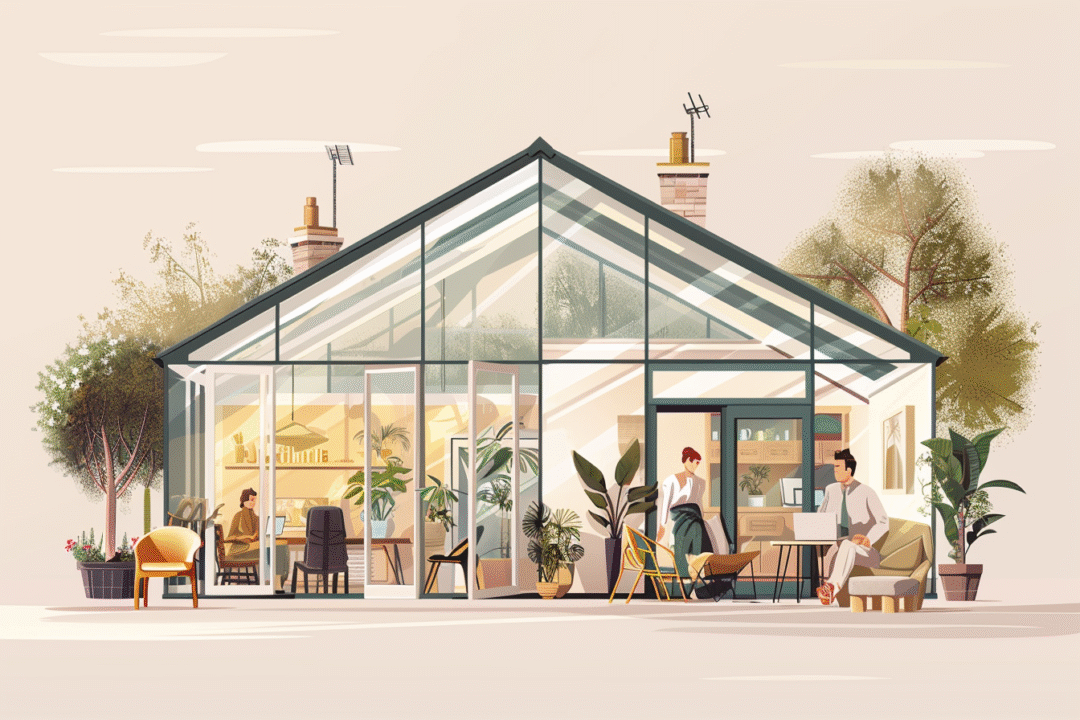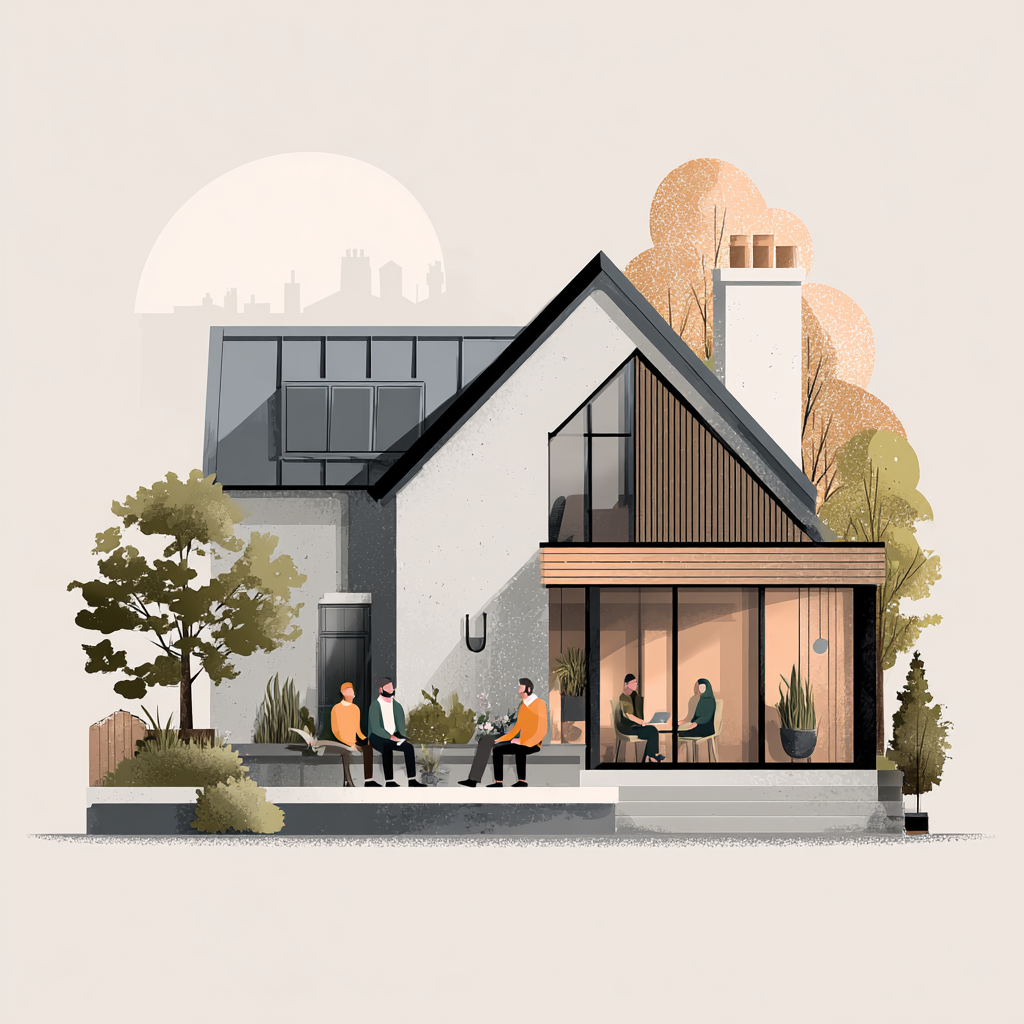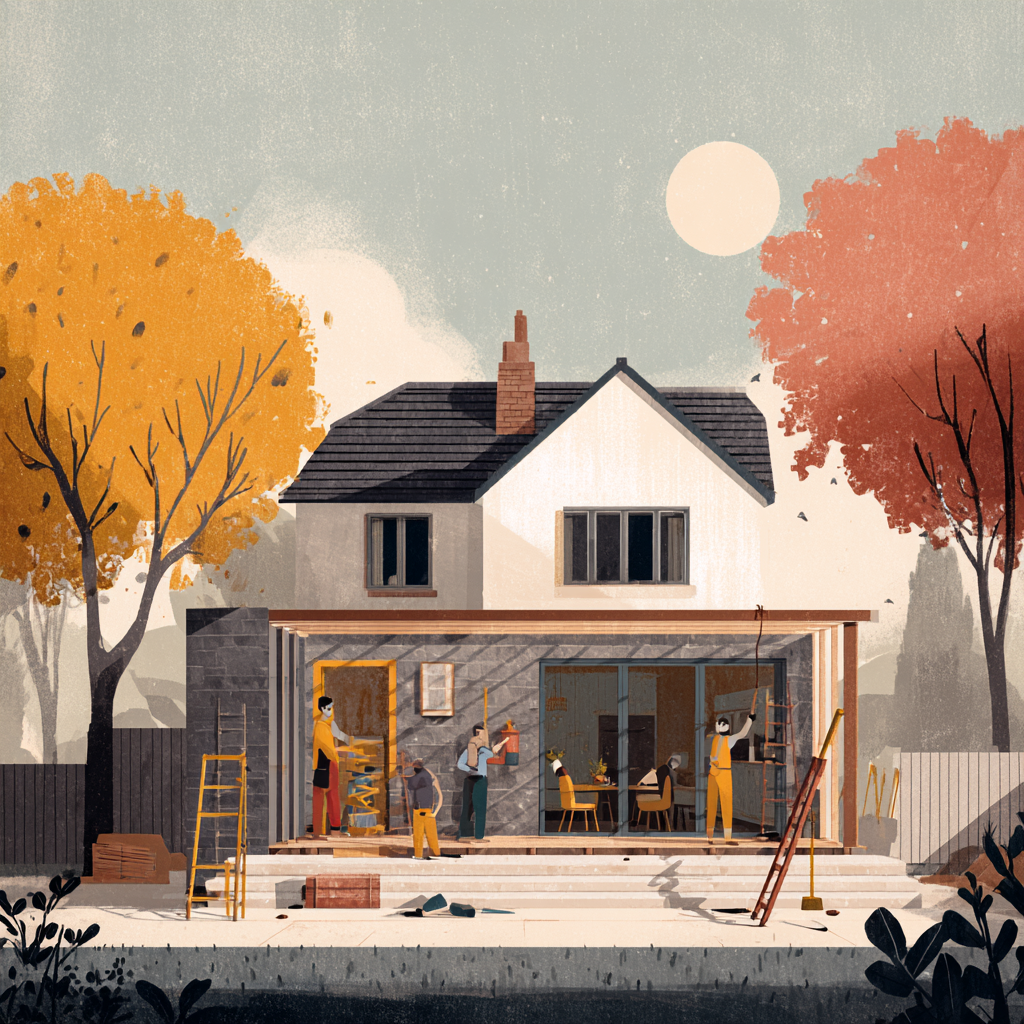Read time: 7 minutes
in 2026 will I need planning permission for my extension Project?
Short answer: Most single-storey extensions in 2026 do not require full planning permission – as long as they meet the UK’s Permitted Development (PD) rules. But if your design is too large, too tall, in a restricted area, or connects to an older extension, you may need Prior Approval or Full Planning Permission instead.
This guide lays out the rules simply. It includes real homeowner scenarios, so you’ll know where you stand before starting your project.
1. First: How Planning Permission Actually Works in 2026
Before we dive into the rules, let’s break down the three types of permissions in the UK.
A) Permitted Development (PD)
✔ No full planning required
✔ Fastest, simplest route
✔ Works for most single-storey extensions
✔ Still requires Building Regulations
PD is what most customers use their projects.
If you stay within PD limits, you skip the planning process entirely.
B) Prior Approval (Larger Home Extension Scheme)
A halfway step between PD and full planning.
✔ Needed only when depth is:
-
6m on semis/terraces
-
8m on detached
The council checks impact on neighbours but the process is much lighter than full planning.
C) Full Planning Permission
Required when:
-
You exceed PD limits.
-
You live in a conservation area / AONB / listed building.
-
PD rights are removed (common on new-build estates)
-
You want a more complex or taller design.
-
You link onto an existing extension and exceed the limits.
This is the slowest route – but sometimes is essential.

2. The Permitted Development Rules Explained (Simple + Visual)
These are the rules most homeowners fall under.
✔ How far you can extend (projection depth)
-
Detached home: up to 8m (via Prior Approval)
-
Semi-detached / terrace: up to 6m
Without Prior Approval:
-
Detached = 4m
-
Semi/terrace = 3m
Important detail most people miss:
Projection is always measured from the “original rear wall” of the house — not the current one.
This means:
-
Bay windows count as part of the “original” wall.
-
Previous extensions push the measurement forward.
-
L-shaped houses measure from the furthest rear point.
This detail changes everything for some projects.
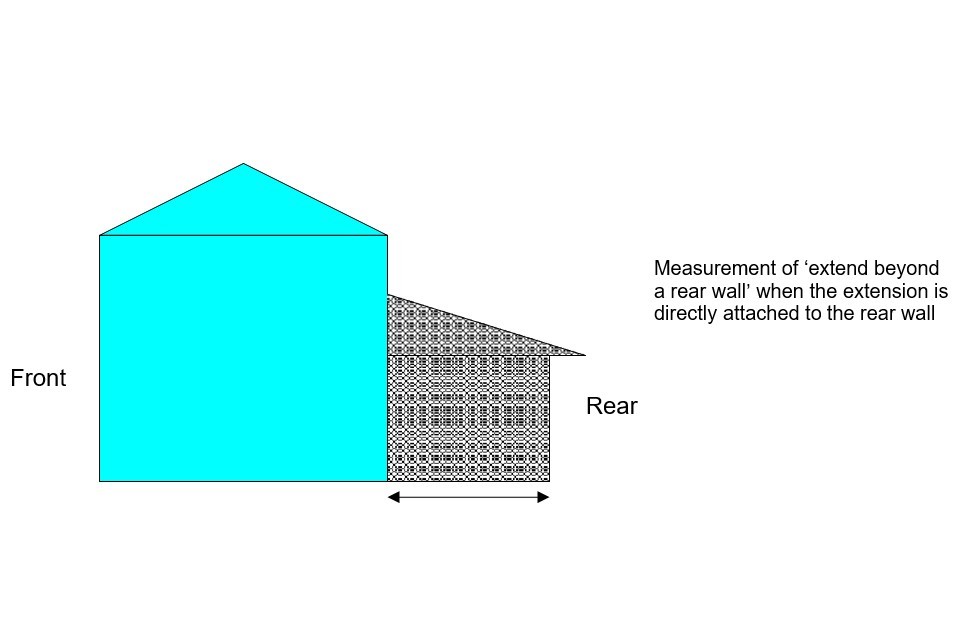
If the back of your house isn’t in a straight line and has “steps,” each step counts as part of the original rear wall.
This means you measure your extension from the part you are building from, as long as none of the new walls go beyond the permitted depth.
In the example below a semi-detached house can extend 3m from the original rear wall.
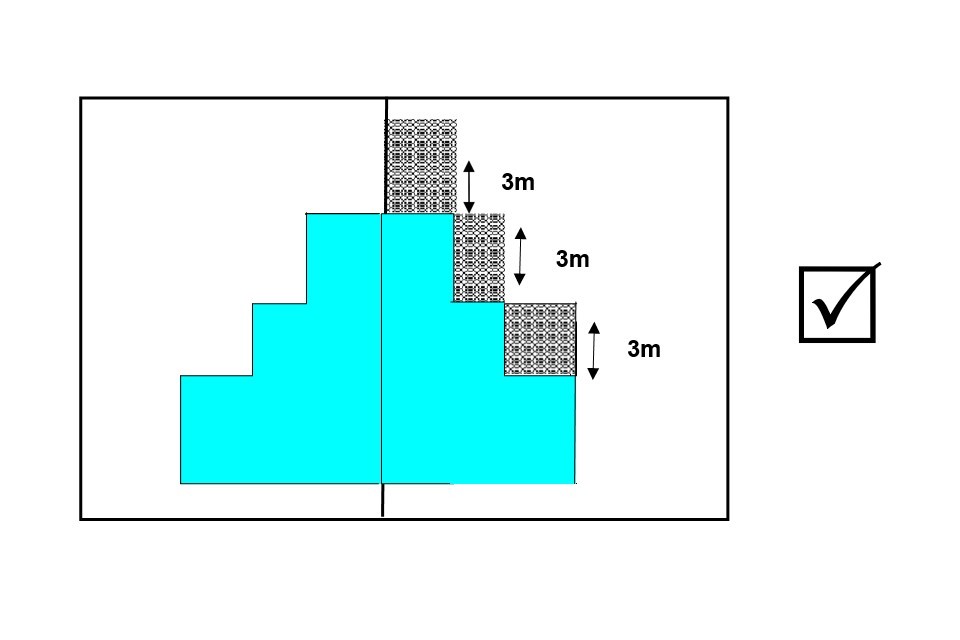
✔ Height rules (simple version)
-
Max eaves height: 3m if within 2m of a boundary
What “Eaves Height” Actually Means (Clear Definition)
To avoid confusion, here’s the exact definition:
The eaves are the point where the wall of your extension meets the lowest part of the roof.
In even simpler terms:
👉 Eaves height = the height of the wall before the roof begins.
-
Max overall height:
-
4m (dual pitch)
-
3m (flat roof)
-
-
Cannot be taller than your house
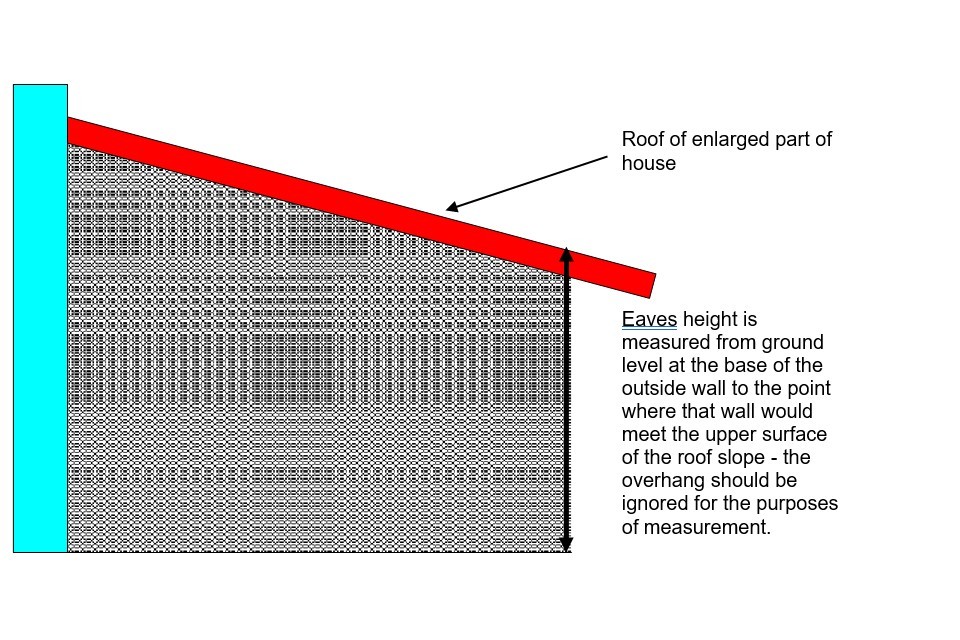
The same approach is taken for flat roofs.
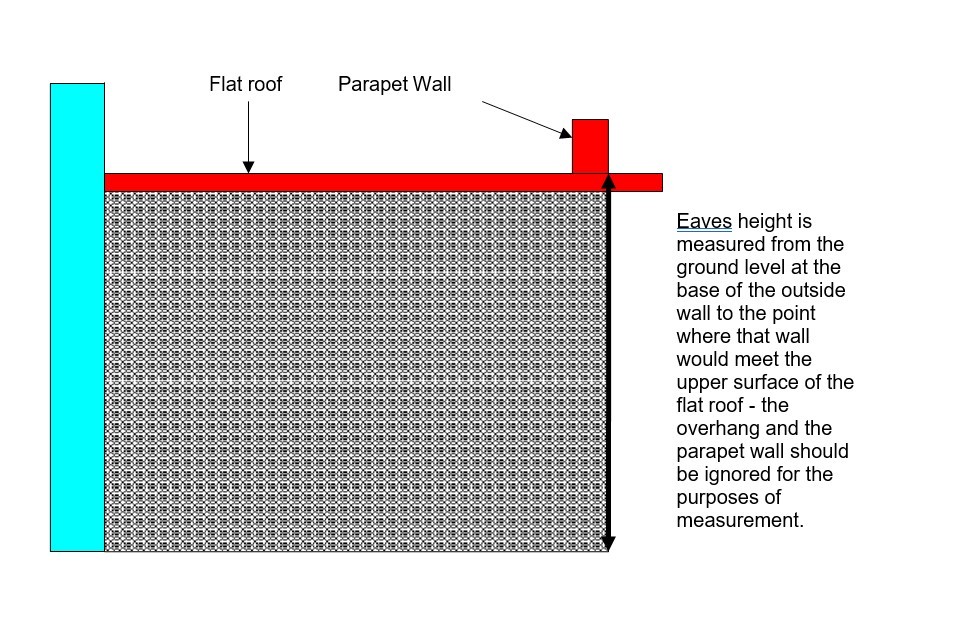
✔ Width and placement
-
You can’t extend beyond half the width of the original house
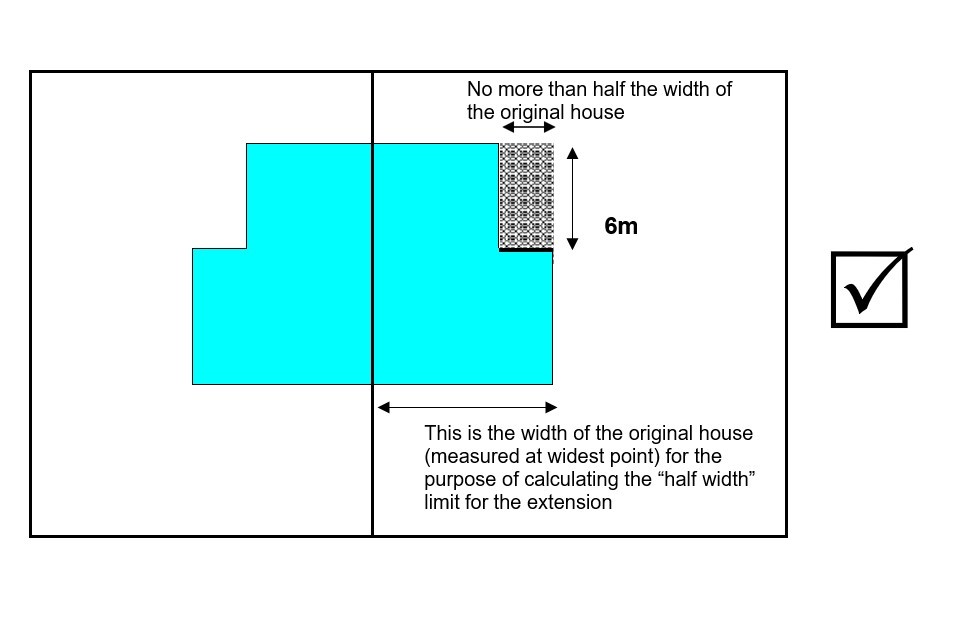

-
You cannot extend forward of the main elevation.
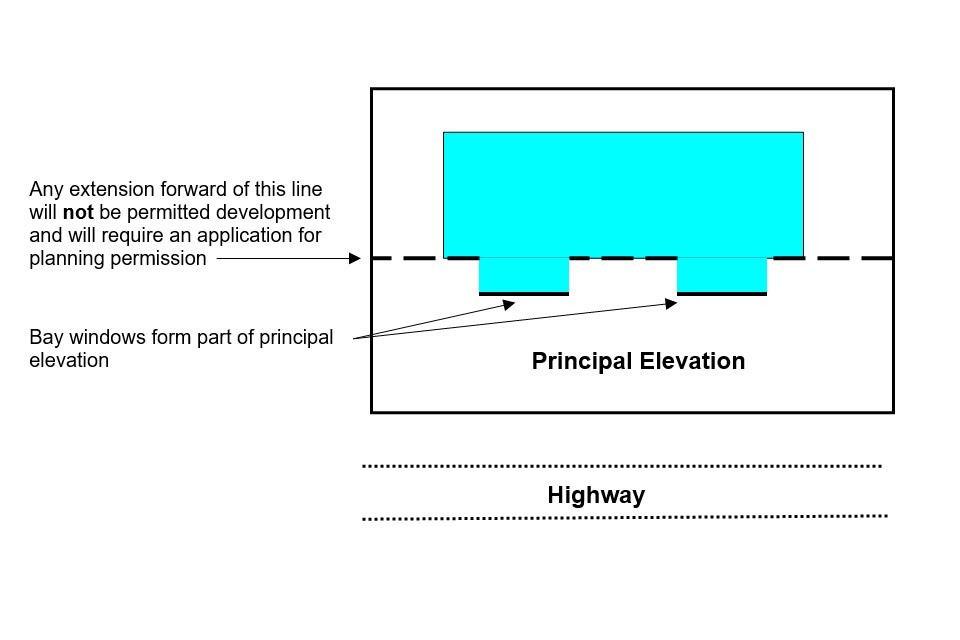
✔ Roof types allowed under PD
All of these can be PD:
-
Glass roof = Conservatory
-
Flat roof = Orangery
-
Tiled roof = Extension
As long as the design stays within the PD limitations.
✔ Materials
Must be “similar in appearance” to the main house.
We achieve this with:
-
Matching brickwork
-
Matching render
-
Same colour schemes
-
Heritage detailing
This is why Precision designs look “natural” – and why they often fall comfortably under PD.
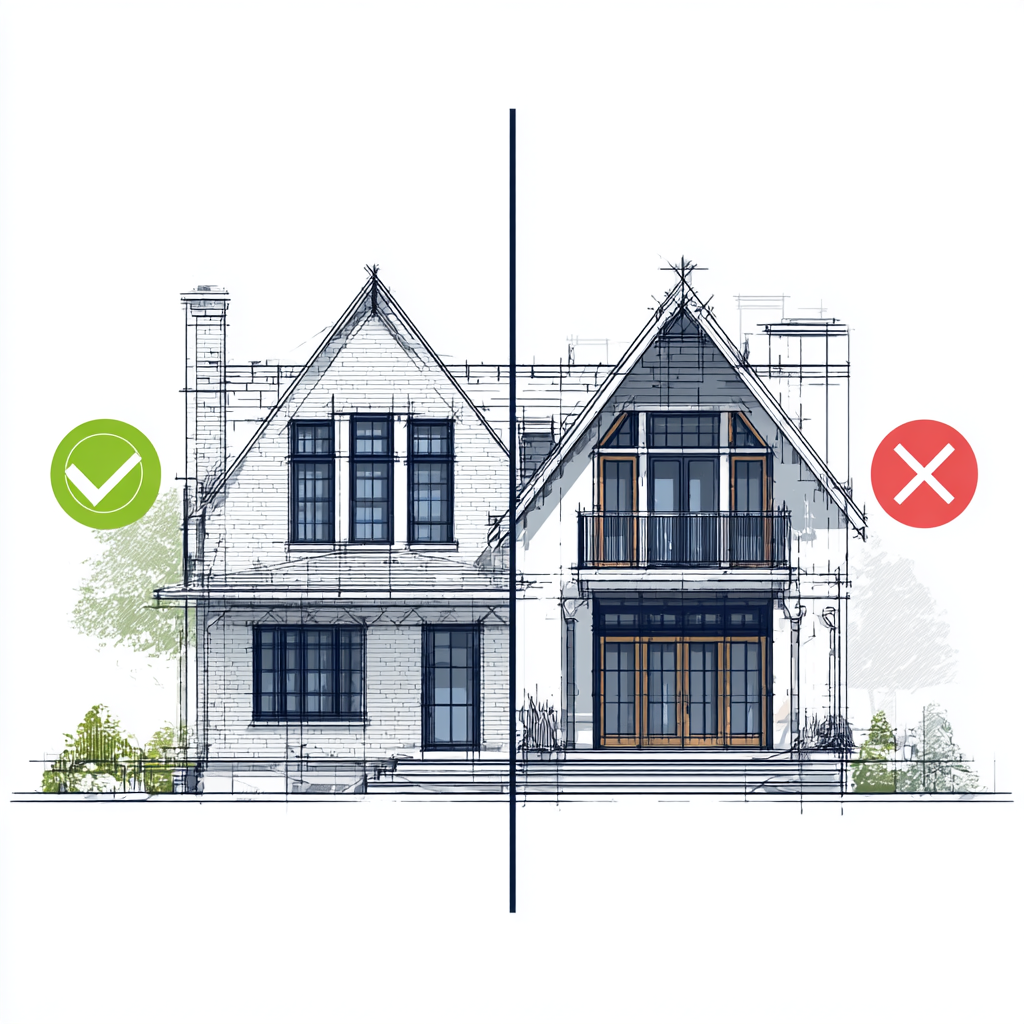
3. When You NEED Full Planning Permission
Full planning is required if:
-
You live in a conservation area.
-
Your home is listed.
-
PD rights have been removed (common on estates built after 2010).
-
Your design is too deep or too tall.
-
You want to build on the side or front.
-
Roof height exceeds PD.
-
You’re creating a balcony or raised platform.
-
You connect your new extension to an existing one and go over the combined limits..
Linking to an older extension often leads to planning issues. The council views the whole structure as one extension.
We take care of this during the design stage, so customers don’t make wrong assumptions.

4. The Most Common Misconceptions (Homeowners Get These Wrong)
This is the section that sets your guide above everyone else’s.
❌ 1. “If my neighbour objects, my project will be refused.”
False.
A neighbour objection only matters if it raises a valid planning concern, such as:
-
Loss of light
-
Overlooking
-
Overshadowing
“I don’t like it” is NOT a planning reason. Your project can still be approved.
❌ 2. “If I change the design of my conservatory, I need planning.”
Not usually.
Changing:
-
Doors
-
Frame colour
-
Layout
-
Windows
…does not trigger planning as long as the conservatory stays within existing PD limits.
❌ 3. “Changing my conservatory roof always needs planning.”
Not always.
✔ Replacing a glass/poly roof with another?
Usually no planning.
✔ Changing to a tiled roof?
Often PD-compliant as long as:
-
Height doesn’t increase
-
Eaves remain compliant
This is why most tiled-roof upgrades we design do not need planning.
✔ Planning IS needed when the new roof goes outside PD limits.
👉 It’s not the fact that the roof is tiled – it’s whether the new design breaches PD.
✔ Regardless of planning, Building Regulations are ALWAYS required
This applies to every solid roof, because:
-
The structure must support the extra weight
-
A thermal assessment may be needed.
-
Ventilation must comply.
-
Structural calculations are required.
So the simple rule is:
👉 Planning depends on PD limits. Building Regulations are required every time.
❌ 4. “Orangeries need planning but conservatories don’t.”
False. The product type doesn’t matter – only the rules.
A small orangery may be PD. A tall conservatory might need planning.
❌ 5. “You can’t extend a listed building.”
You can – but you need Listed Building Consent.
Councils prefer:
-
Timber
-
Slimline profiles
-
Heritage glass
But in 2025/2026 we are seeing more conservation departments approving aluminium when the design is sympathetic.
❌ 6. “If there was a conservatory here before, I can rebuild without planning.”
Not always.
If the old structure:
-
Exceeded PD.
-
Was built illegally.
-
Was part of a previous extension.
-
Changed the rear elevation layout.
…then you may need planning to replace it.
We check this during survey.
❌ 7. “If it’s PD, I don’t need building regulations.”
Incorrect.
Building Regulations apply to:
-
Tiled roofs.
-
Structural knock-throughs.
PD = removes planning
Building regs = safety & compliance
5. Does Linking to an Existing Extension Require Planning?
Often yes.
Here’s the simple rule:
✔ If your new extension connects to an old extension and the combined depth exceeds PD limits
→ Planning is needed.

✔ If the old extension already used up your PD rights
→ Planning is needed.
This is one of the biggest mistakes budget builders make – they ignore this rule entirely.
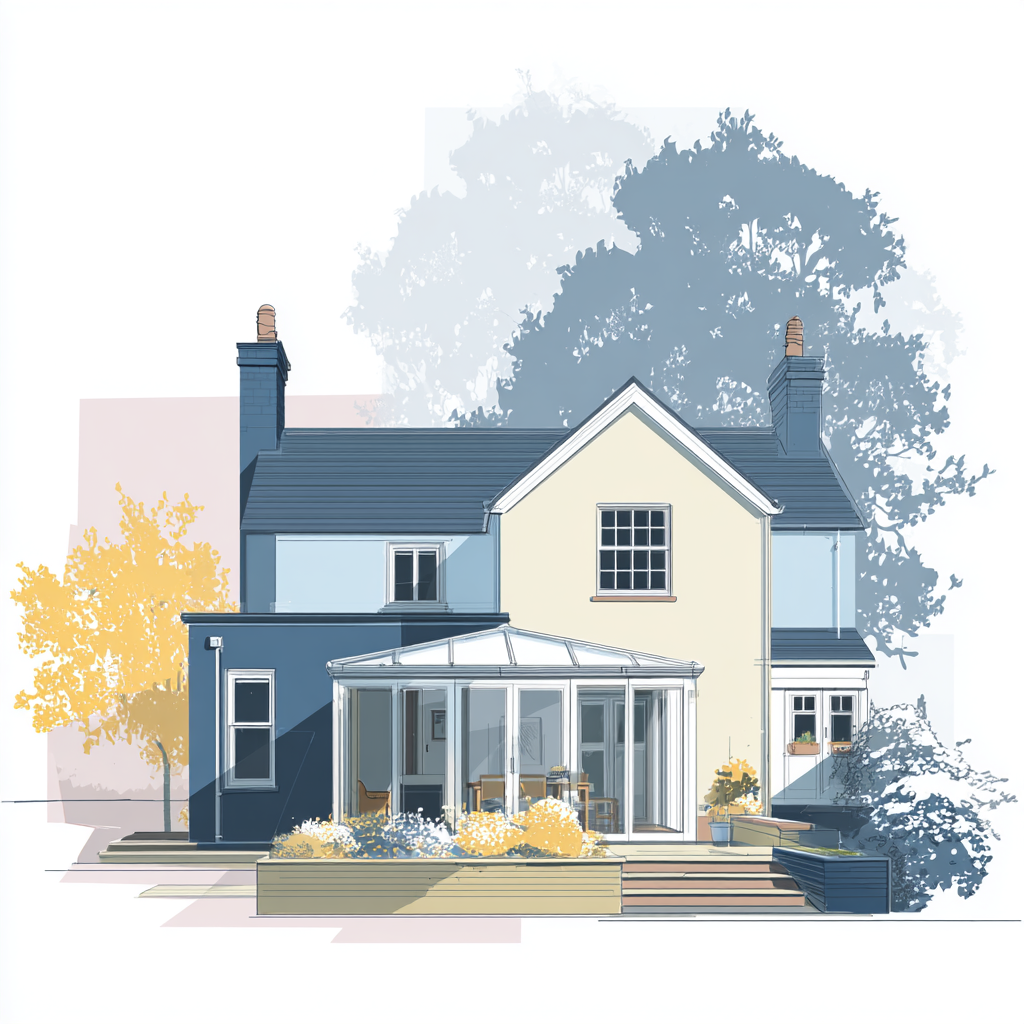
6. Real-World Scenarios
Scenario 1 — 4m Orangery on a Semi
✔ PD compliant ✔ No planning ✔ Building regs required
Scenario 2 — 7m Orangery on a Detached Home
✔ Needs Prior Approval ✔ No full planning
Scenario 3 — 4m Orangery on a Detached Home with Internal Wall Removal
✔ PD compliant ✔ No planning ✔ Building regs required
Scenario 4 — Replacing Old Conservatory With Tiled Roof Extension
✔ Often PD if height remains the same ✘ Planning if roof height increases ✔ Building regs required
Scenario 5 — Extension on a New-Build Estate
✘ PD often removed by developer ✔ Planning required ✔ Building regs required
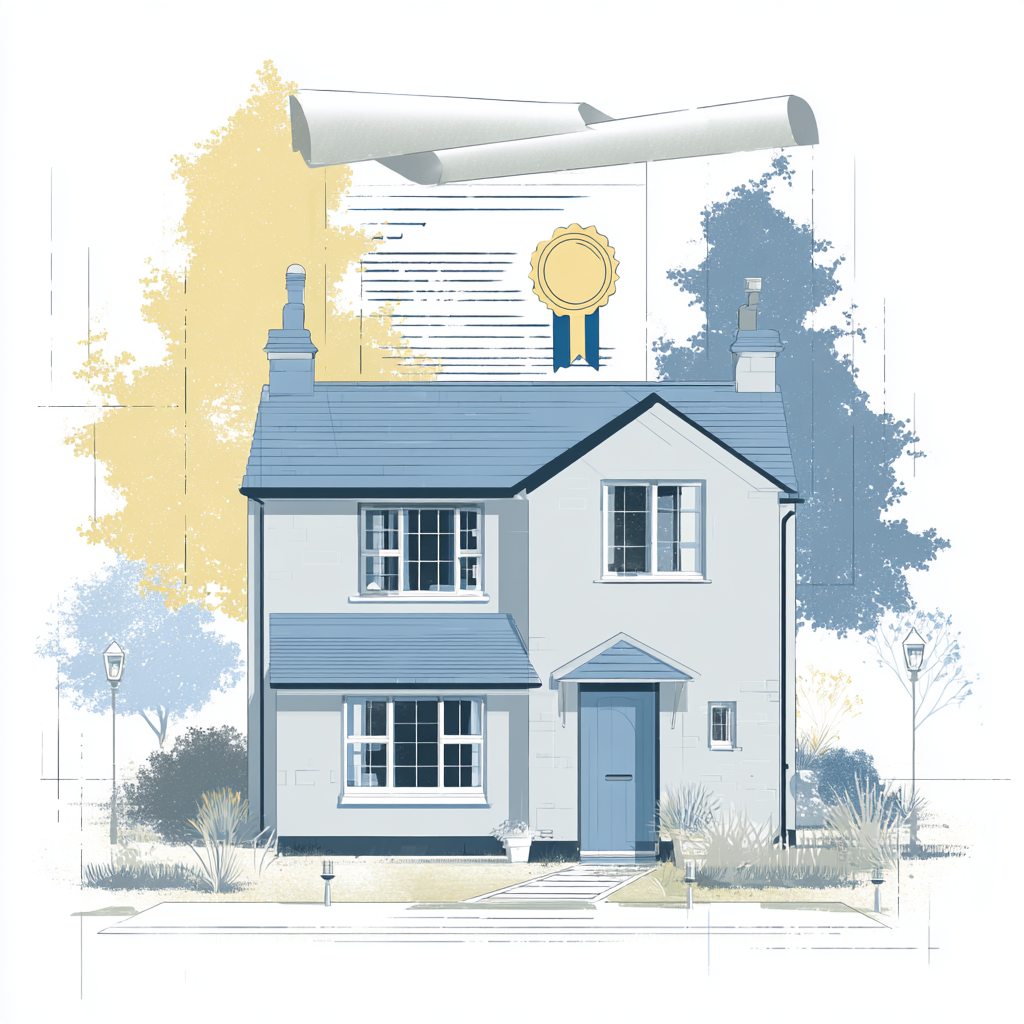
7. Certificate of Lawfulness — Should You Get One?
At Precision, we don’t routinely apply for Certificates of Lawfulness unless:
-
The homeowner requests it.
-
PD limits are tight.
-
Proving legality will help with future sale.
-
The property is in a sensitive area.
It is optional. Not essential. But helpful for peace of mind.

8. How Precision Confirms Whether You Need Planning
We make the planning route clear from the very start so there are no surprises later.
Step 1 — Site Survey
We take accurate measurements. Check boundaries. Assess the existing structure.
Step 2 — Initial Planning Guidance
We explain whether your project is likely to fall under:
-
Permitted Development
-
Prior Approval
-
Full Planning Permission
So you know the route before any design work begins.
Step 3 — PD / Planning Check Before Quoting
Before we quote, we run a full check against PD rules and planning requirements. This ensures your quote is correct and you know what permissions you need.
We will take care of all the permissions for you = remove the hassle.
Step 4 — Structural & Building Reg Design (If Required)
We handle all structural and Building Regulations design as needed. This gives you a specification that’s compliant and ready for your project.
Want the full breakdown of what happens next?
We’ve created a step-by-step guide that shows you exactly what happens after this stage – from planning checks to foundations, frames, roof installation and final sign-off.
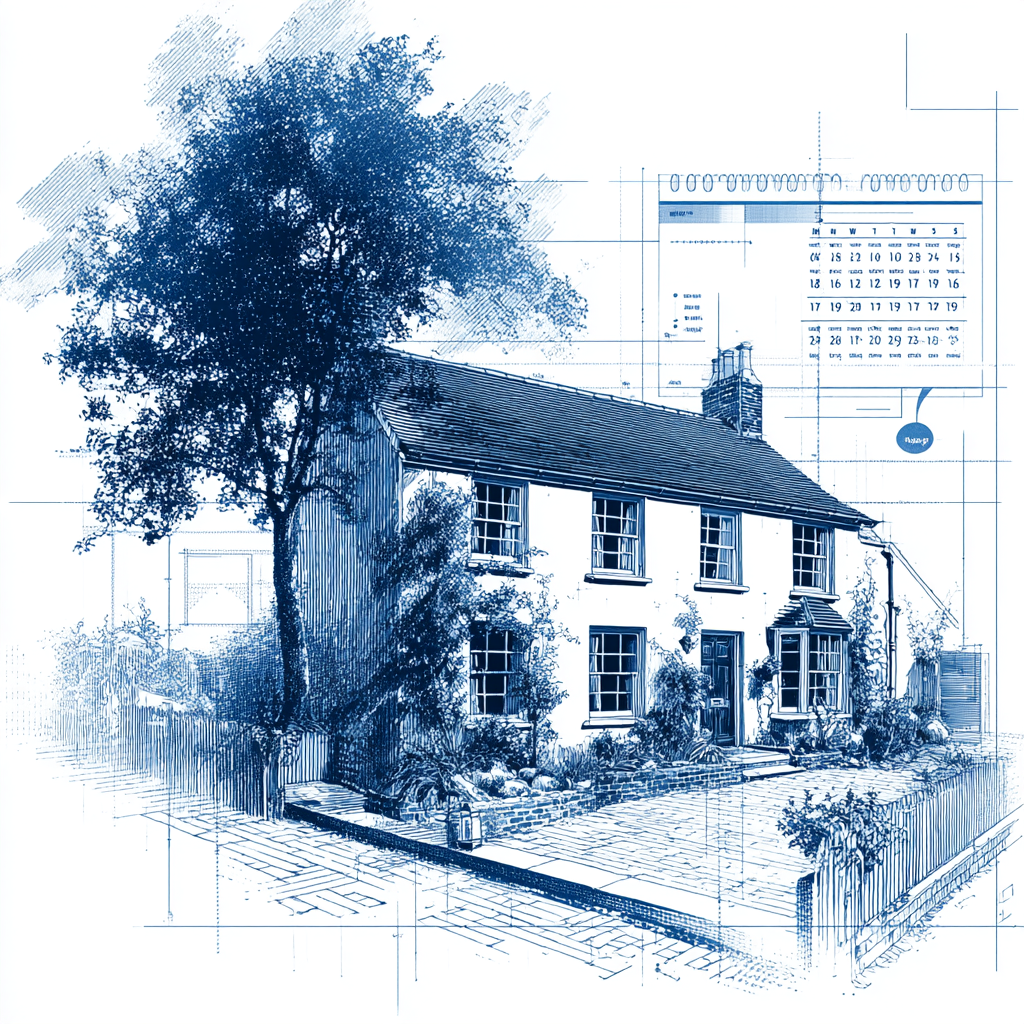
Thinking About a 2026 Project?
Whether you’re unsure about planning or need help designing within PD limits, we can tell you exactly what is and isn’t possible for your home.
